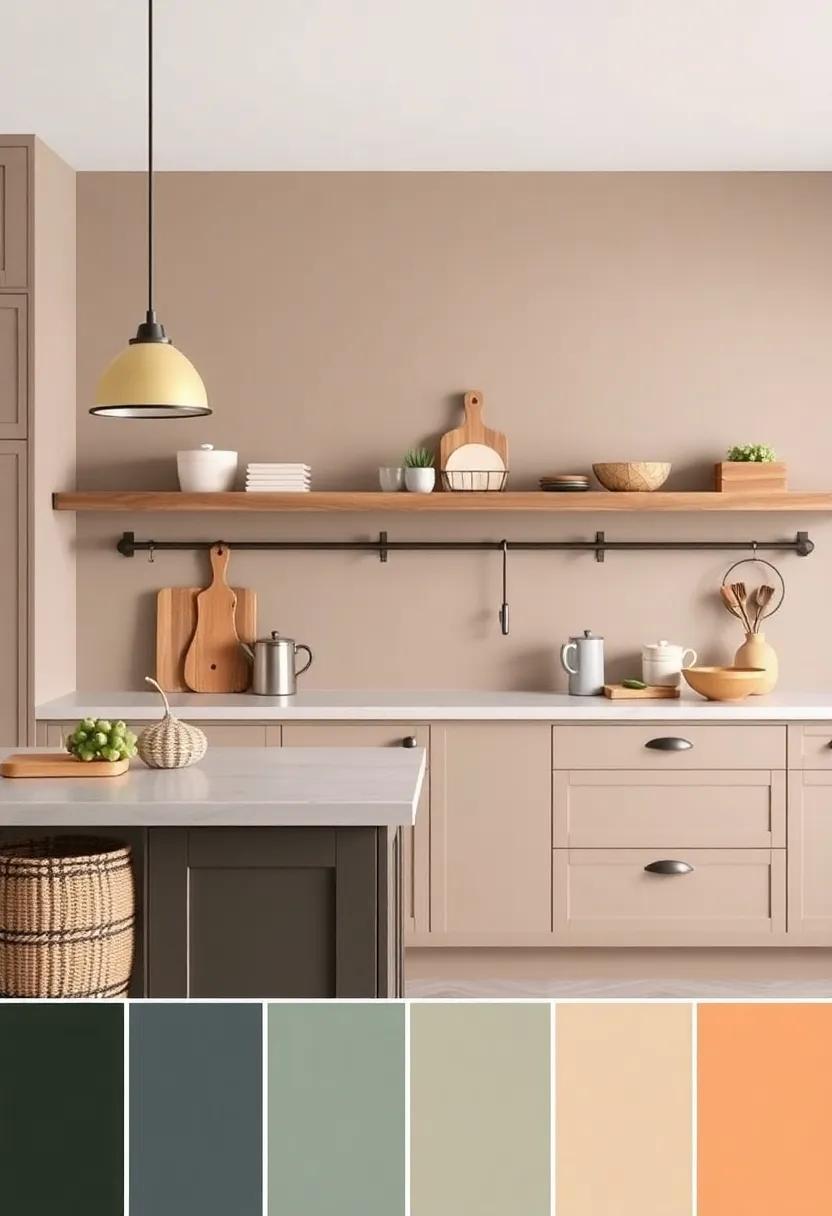In the heart of every home, the kitchen stands as a canvas for creativity and expression, where culinary delights are born and cherished memories are forged. As the hub of daily life, this space deserves thoughtful consideration, particularly when it comes to its aesthetic appeal. Enter rustic charm—a design beliefs that marries the warmth of natural materials wiht the simplicity of countryside living.Captivating kitchen color palettes inspired by rustic elements can transform an ordinary cooking space into an inviting retreat that evokes comfort and nostalgia. In this guide, we’ll explore a variety of enchanting color schemes that harmonize with rustic decor, helping you to craft a kitchen that reflects both your personal style and a timeless sense of tranquility. Whether you lean towards warm earth tones, soft pastels, or bold accent colors, our curated insights will help you embrace the rustic charm that defines this beloved heart of the home.
Embracing the Warmth of Earthy Tones for a Rustic Kitchen Atmosphere
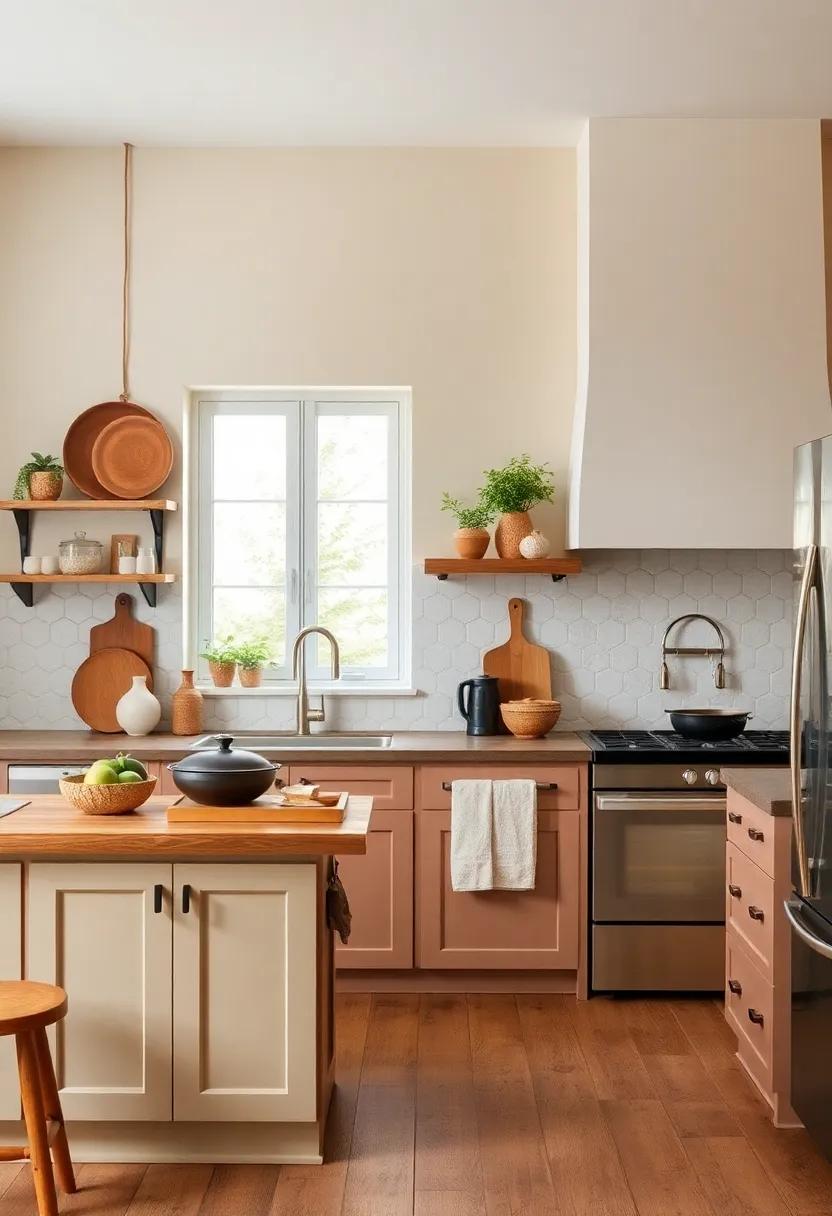
Earthy tones are the perfect palette for cultivating a cozy and inviting kitchen atmosphere, evoking a sense of harmony and connection with nature. Shades such as terracotta, muted olive, soft browns, and warm taupes can serve as the foundation for a rustic design. These colors not only create a visually stunning space but also promote a sense of tranquility and comfort, making cooking and gathering a delightful experience. Pairing these hues with natural materials, like wood and stone, enhances the rustic vibe and helps to foster an inviting surroundings that welcomes family and friends.
When selecting earthy tones for your kitchen, consider incorporating a mix of finishes and textures to add depth to the color scheme. A few tips for achieving that rustic charm include:
- Accent with warm whites: Use off-white or creamy shades for cabinetry to keep the look airy.
- Organic elements: Integrate woven baskets, ceramic pottery, or handcrafted items to enrich the earthy mood.
- Textured fabrics: Choose linen or cotton curtains and table linens in soft,muted colors that complement the overall palette.
To bring your vision to life, consider creating a well-thought-out mood board that showcases your chosen tones and the elements you plan to incorporate. You can also explore various inspirations and ideas from dedicated resources like House Beautiful to guide your design decisions.
Finding Inspiration from Nature: Color palettes That Mirror the Outdoors
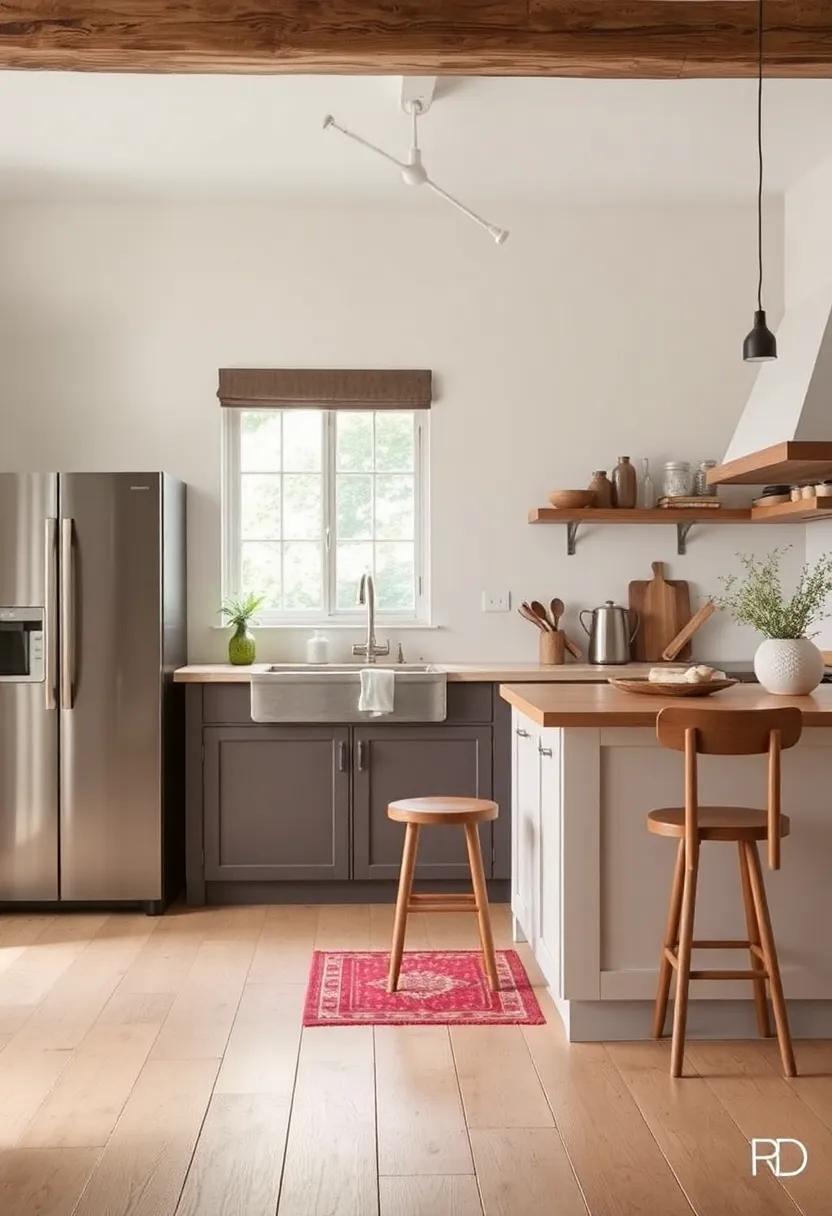
Nature offers a rich tapestry of colors that can seamlessly inspire your kitchen’s aesthetic. Picture the warm hues of a sunlit meadow, where soft yellows and earthy browns converge. These tones evoke a sense of tranquility and homeliness, making them perfect for a rustic kitchen. Consider integrating creamy beige cabinets paired with olive green accents, and perhaps a golden yellow backsplash that mimics the glow of the setting sun. Such combinations not only reflect the beauty of the outdoors but can also create a warm and inviting atmosphere in your cooking space.
Another captivating palette can be drawn from the drama of a forest scene. The deep greens of leaves, interspersed with rich browns of tree bark and flecks of vibrant florals, can serve as a fantastic guideline. Imagine forest green cabinetry with chocolate brown countertops, contrasted by pops of wildflower-inspired colors in decorative elements. This earthy palette can foster a connection to nature, offering a sense of peace and grounding. For more inspiration,you can explore resources at Houzz to visualize these harmonious combinations.
| Nature-Inspired Colors | Kitchen Elements |
|---|---|
| Warm Beige | Creamy Cabinets |
| Olive Green | Accent Walls |
| Golden Yellow | Backsplashes |
| Forest Green | Cabinetry |
| Chocolate Brown | Countertops |
| Wildflower Colors | Decorative Accents |
The Allure of Neutral Shades: Creating a Cozy Rustic Kitchen Vibe
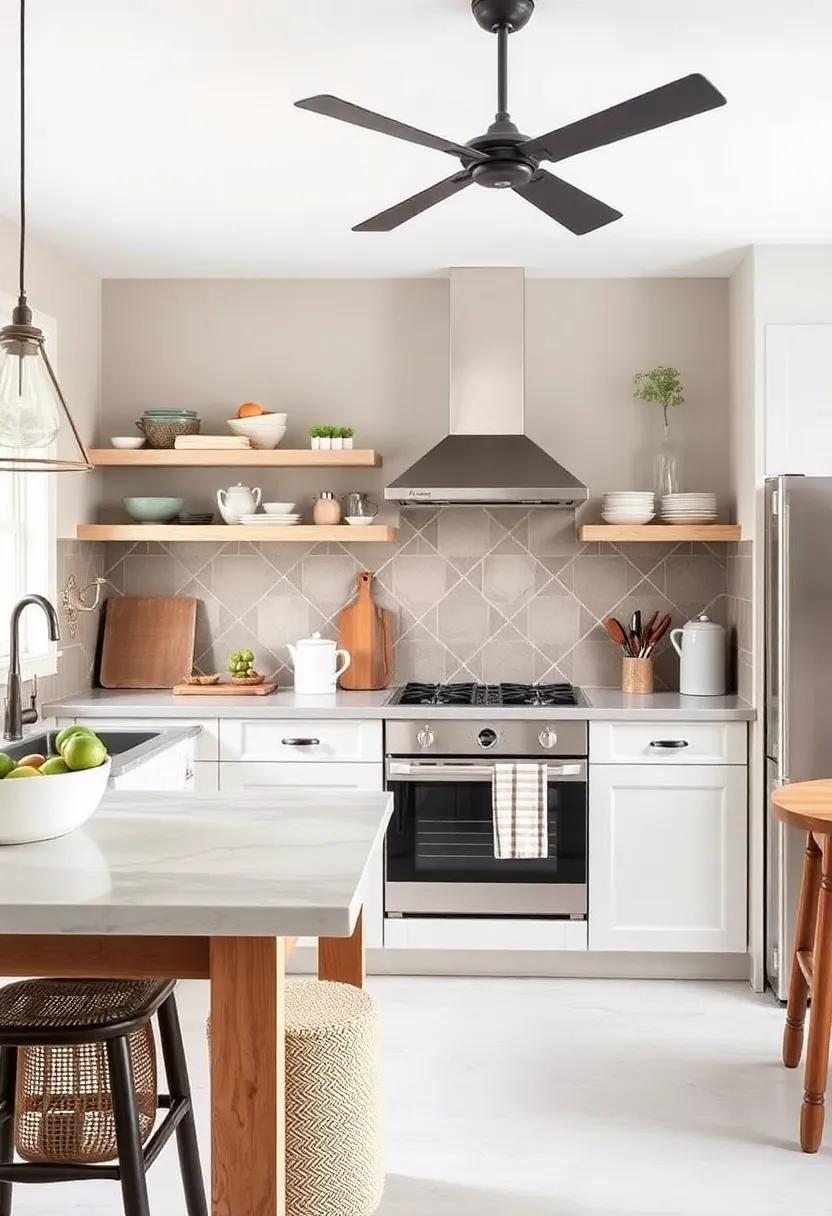
Neutral shades evoke a sense of warmth and tranquility that perfectly align with rustic aesthetics. Opting for a palette that features soft beiges, gentle grays, and creamy whites can transform your kitchen into a haven of coziness.These colors act as a blank canvas, allowing the natural beauty of your wooden elements, stone textures, and vintage finds to shine through. Incorporating rustic materials, such as reclaimed wood beams or a farmhouse sink, harmonizes beautifully with the gentleness of neutral hues, creating an inviting atmosphere that encourages gathering and conversation.
To elevate the rustic charm in your kitchen, consider blending various neutral tones for depth and interest. Layer your shades by incorporating elements such as:
- Neutral cabinetry: Opt for soft gray or cream tones.
- Textured textiles: Use linen curtains or cotton tablecloths in muted palettes.
- Accent decor: add warm wood accents or vintage items in similar shades.
This thoughtful combination not only enhances the cozy aesthetic but also allows for easy adjustments in decor without clashing with your base palette. For inspiration and color choices that breathe life into your rustic kitchen vibe,visit Behr for expert suggestions on achieving that perfect look.
Adding Depth with Darker Accents in Your Rustic Kitchen Design
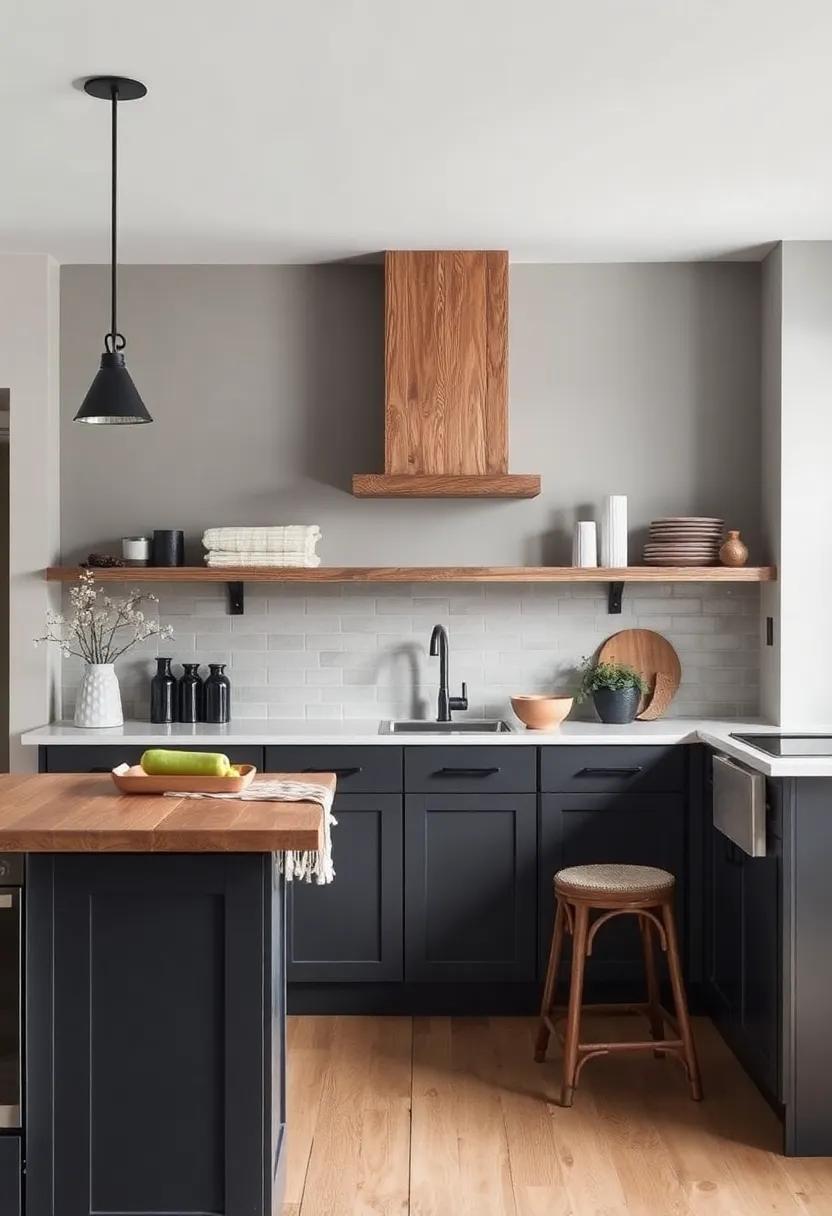
Incorporating darker accents in your kitchen can create a stunning visual contrast that enhances the rustic charm of your space. Opt for deep hues like charcoal gray, forest green, or navy blue to add richness and warmth to your design. These colors can be effectively used in various elements, such as cabinetry, countertops, and even appliances, providing a striking backdrop for lighter wood tones and textured fabrics. Pairing darker shades with natural materials like reclaimed wood and stone creates a harmonious balance that encapsulates the essence of rustic style.
When choosing how to introduce darker accents, consider these key elements to achieve the best results:
- Backsplash: A dark, patterned tile can draw attention and anchor the space.
- Light Fixtures: Opt for wrought iron or black metal for a farmhouse feel.
- Furniture: Darker dining chairs or bar stools can provide contrast against lighter tabletops.
Combining these accents with thoughtfully selected lighting can also enhance the overall atmosphere, allowing the darker elements to stand out without overwhelming the space. For additional inspiration on color palettes and vintage design ideas,visit architecturaldigest.com.
Choosing the Perfect Paint Finish to Enhance Rustic Charm
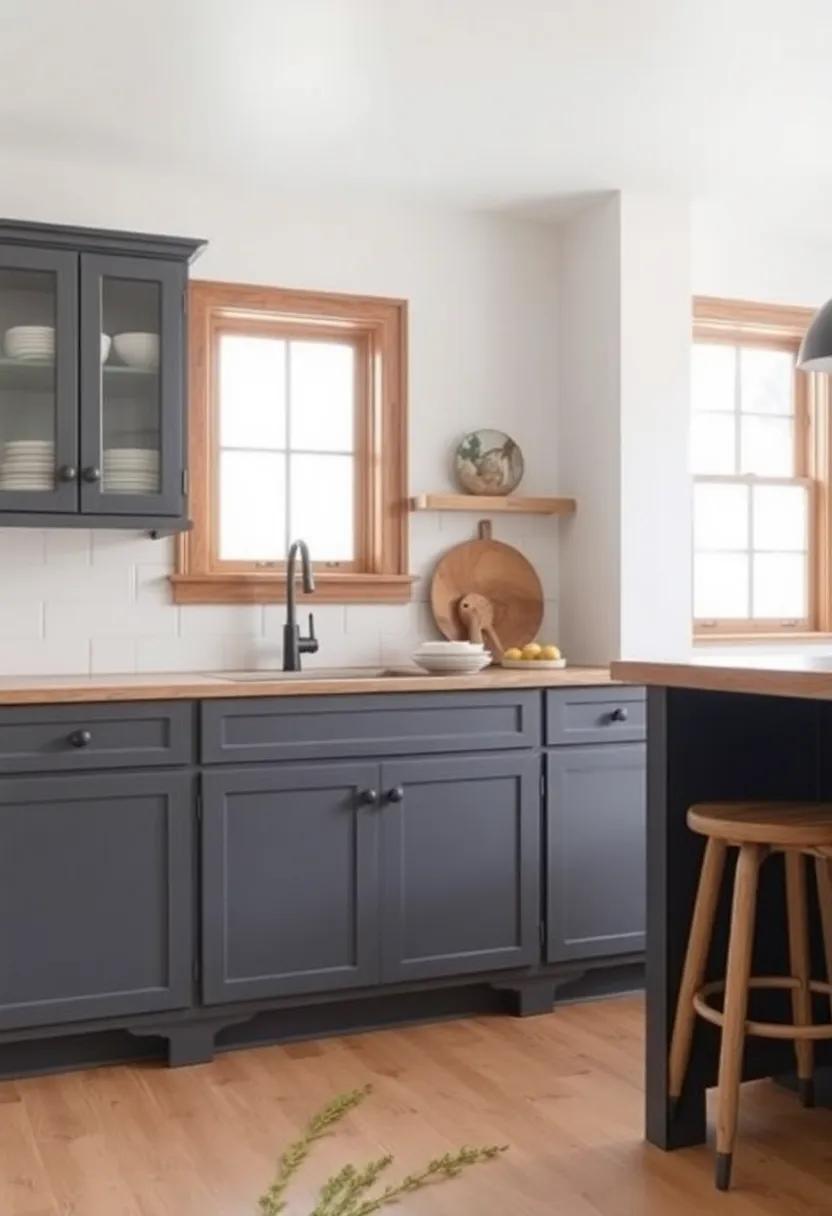
When it comes to enhancing the rustic charm of your kitchen,the choice of paint finish plays a pivotal role in grounding the overall aesthetic.Matte finishes are ideal for creating a soft,warm ambiance that evokes a sense of coziness. They beautifully absorb light and can provide an inviting backdrop for your rustic decor. On the other hand, a semi-gloss finish offers a hint of sheen, adding a touch of sophistication while still maintaining a handcrafted feel. This finish is perfect for kitchen areas where durability is key, as it’s easier to clean and withstands wear and tear better than its matte counterpart.
If you’re after a more luxurious rustic appeal, consider a chalky finish, which delivers a unique texture that mimics aged paint, perfect for achieving that distressed look. Alternatively, eggshell finishes present an excellent middle ground, offering subtle shine while providing protection against stains, making them a practical choice for high-traffic areas. When selecting your paint finish,keep in mind how natural light interacts with the space and the colors you’ve chosen. For further inspiration, explore resources on House Beautiful to see how various finishes can transform rustic kitchens into warm, inviting heart-of-the-home spaces.
Mixing and Matching: complementary Colors for a Rustic Aesthetic
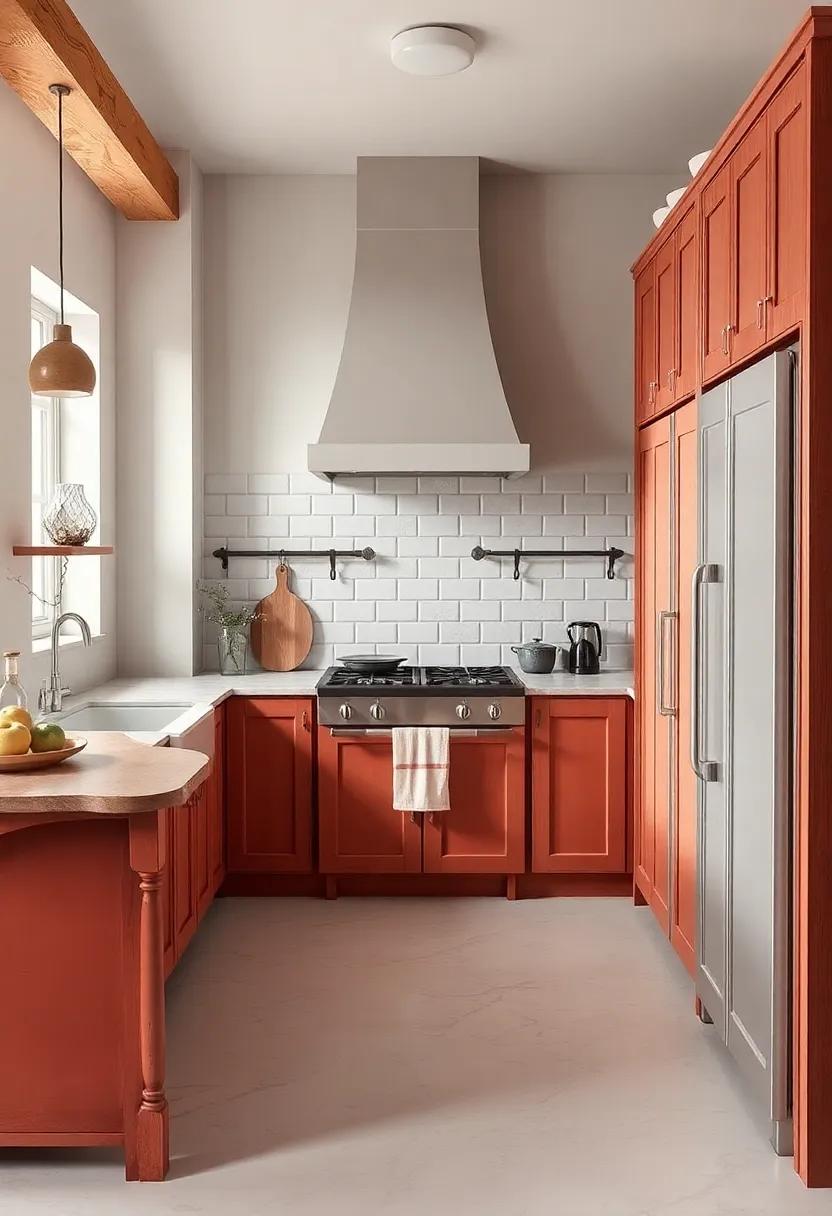
To achieve a stunning rustic aesthetic in your kitchen, mixing and matching complementary colors can wonderfully enhance the overall ambiance. Earthy tones combined with vibrant shades create a harmonious balance that speaks to a cozy yet charming vibe. Consider pairing soft sage greens with warm terracotta or rich navy blues with golden yellows. These combinations not only evoke the beauty of nature but also invite a sense of tranquility into your cooking space. Remember, your choice of materials can amplify these color schemes; think reclaimed wood countertops paired with smooth, colorful ceramic tiles.
Explore classic pairings such as deep burgundy with muted olive or warm caramel with cool slate. These hues can be incorporated through cabinetry, wall paint, and decorative accents like dishware or textiles. To visualize these combinations, you might find it helpful to reference a color wheel, ensuring that the balance aligns with your personal style. Here’s a simple table to guide you in selecting your rustic color palette:
| Color Pairing | Recommended Use |
|---|---|
| Sage Green & Terracotta | Cabinets and Floor Tiles |
| Navy Blue & golden Yellow | Accent Decorations |
| Deep Burgundy & Muted Olive | Wall Paint |
| Warm Caramel & Cool Slate | Countertops |
For more inspiration on color schemes,you might want to check out Color Palettes, which offers a vast array of combinations and ideas tailored for rustic styles.
creating Contrast: The Impact of Light and Dark in Kitchen Color Schemes
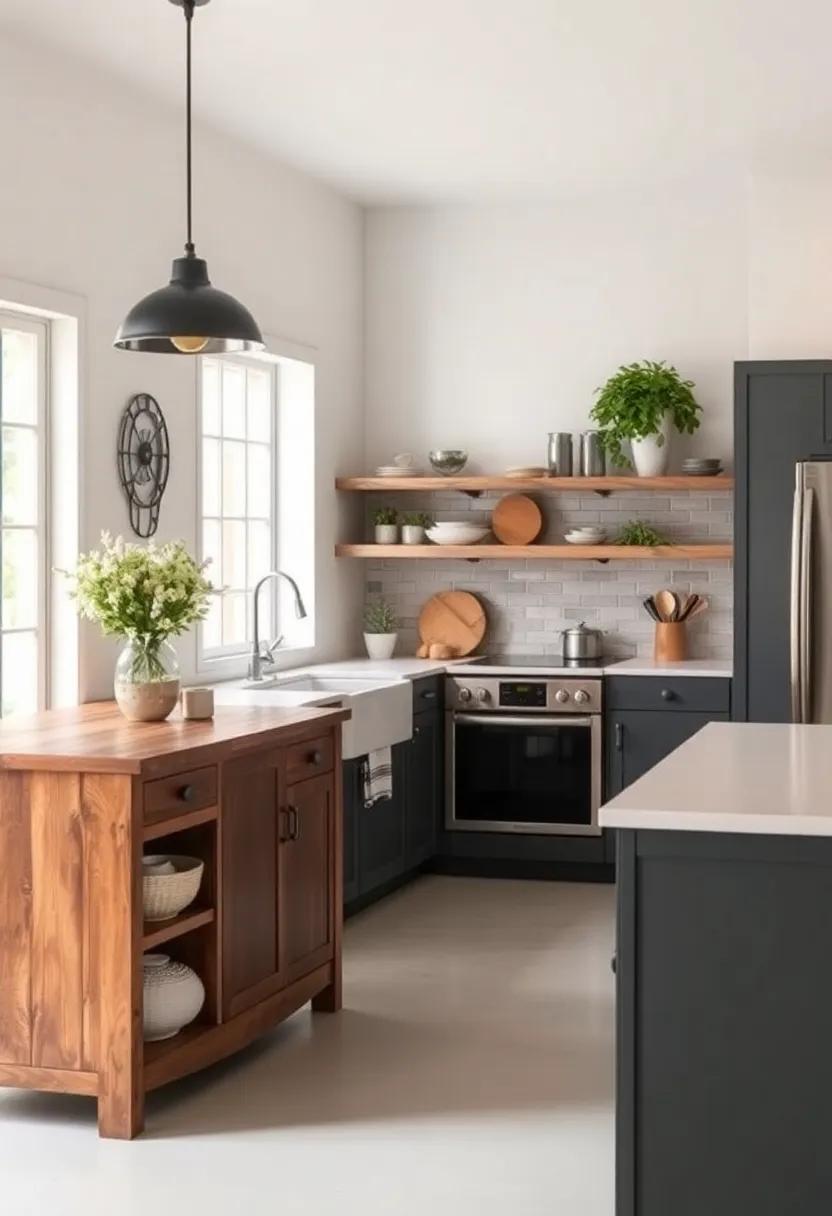
In the quest for a captivating kitchen, the balance between light and dark tones can dramatically influence the overall design. Light hues, such as soft whites, pale grays, and delicate pastels, create a sense of openness and airiness, making smaller spaces feel larger and more inviting.They reflect natural light beautifully, enhancing the rustic charm inherent in wooden cabinets or beamed ceilings. Conversely, darker shades like deep blues, charcoal, and forest greens can add depth and sophistication, giving the kitchen an intimate, cozy feel. These darker colors serve as a stunning backdrop for rustic elements, allowing woods and metals to stand out more prominently.
To thoughtfully integrate contrast into your kitchen color scheme, consider the following approaches:
- Use two-tone cabinetry: Pair lighter upper cabinets with darker lower cabinets for balanced visual interest.
- Incorporate contrasting backsplashes: Opt for a dark backsplash with lighter countertops or vice versa to draw the eye and create focal points.
- Choose accent walls: A single wall painted in a bold, dark color can serve as a dramatic contrast to lighter surrounding walls.
For inspiration, explore various mixes of light and dark shades on platforms like houzz, where you can find real-life examples of stunning color combinations that breathe life into rustic kitchens.
Integrating Vintage Accents: Colors That Celebrate Timeless Style
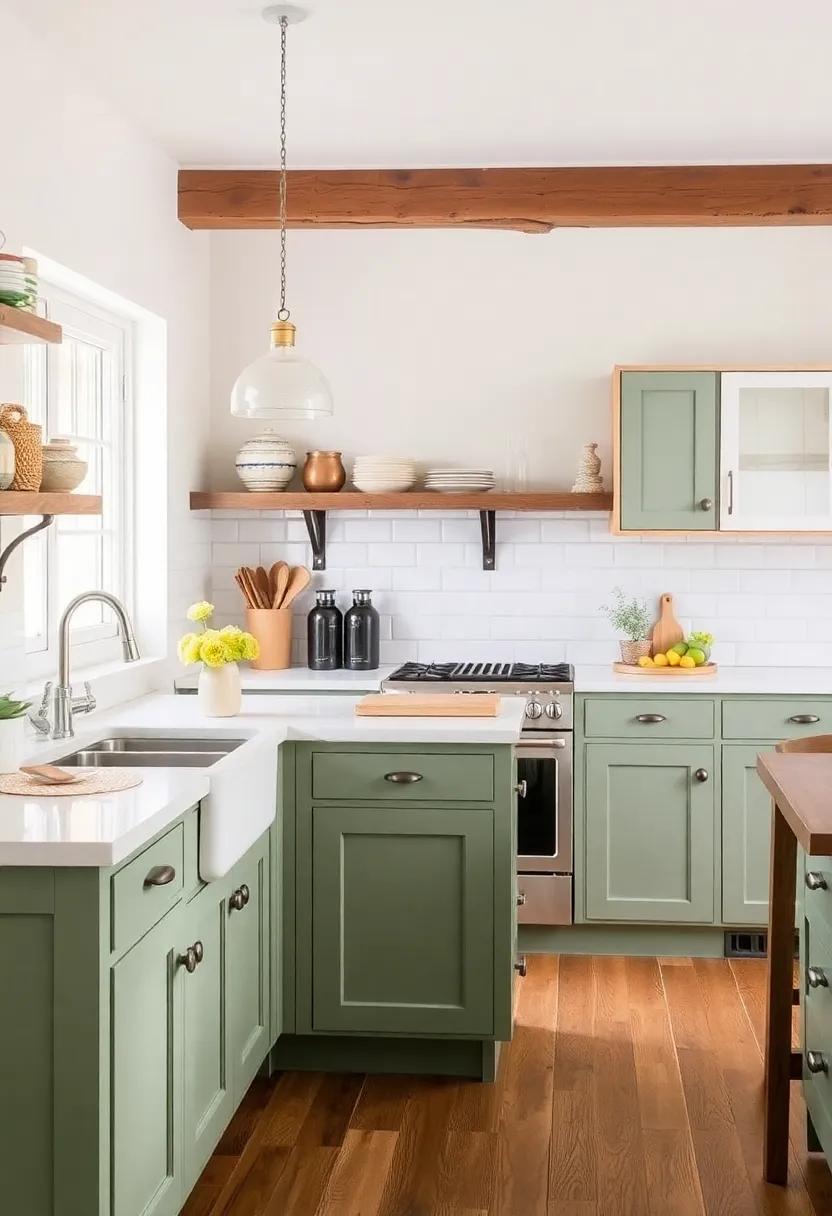
Vintage accents bring an exquisite depth to any kitchen, particularly when complemented by a thoughtfully curated color palette.Shades like deep sage green, rustic terracotta, and warm beige subtly echo the charm of yesteryears while harmonizing beautifully with wooden textures and antique finishes. By incorporating these hues, you can create a canvas that celebrates not only the ingredients in your kitchen but also the stories behind your cherished pieces. Combine these colors with soft whites or creamy ivories to allow your vintage accessories to shine.
To enhance the nostalgic feel, consider adding splashes of muted pastels, such as dusty rose or powder blue. These colors can invigorate a rustic kitchen while maintaining the timeless aesthetic. Textured textiles, such as linen or burlap, can complement these tones and add warmth without overwhelming the senses. For those seeking inspiration, explore resources that delve into historical color trends and palettes at color.org. This fusion of classic colors and textures not only breathes life into your culinary space but also creates a backdrop for memorable moments.
Incorporating Natural Materials for a Harmonious Color Palette
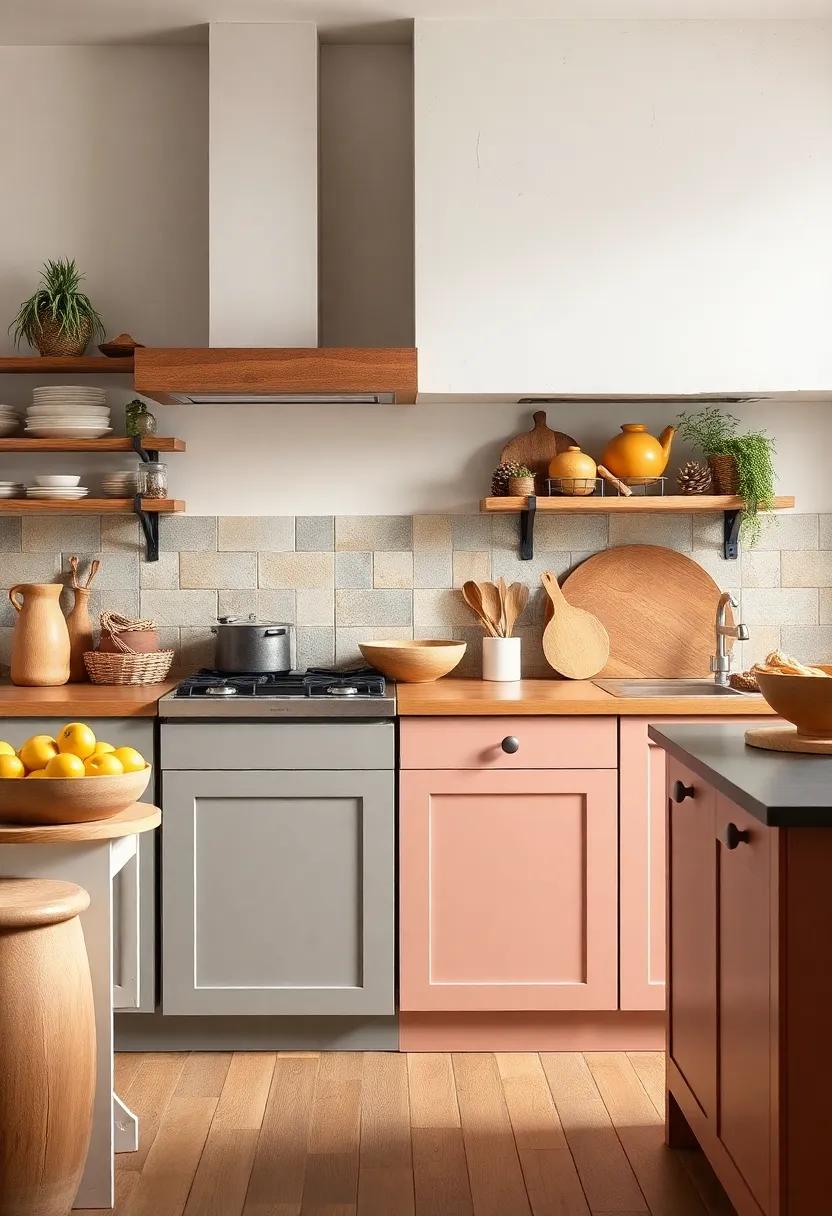
To create a color palette that resonates with the enchanting beauty of nature, consider incorporating materials that are inspired by the rustic charm of the outdoors. Elements like wood, stone, and natural fibers can influence your color choices considerably, allowing for a cohesive and inviting aesthetic. For example, when selecting paint shades, think about the warm undertones of aged timber or the soft, muted tones of river stones. Pairing deep greens, rich browns, and warm neutrals can evoke a sense of calm and connection to nature, providing a soothing backdrop for daily activities.
In addition to choosing paint colors, incorporating textures from natural materials can enhance your kitchen’s visual appeal. Consider using finishes such as unvarnished wood cabinets, slate countertops, or woven baskets. These elements not only introduce depth but also tie back to your chosen color scheme, creating a harmonious environment. When selecting fixtures and accessories, opt for earthy hues that complement the existing elements; think of a palette inspired by a serene forest or rugged mountains. For more inspiration on color combinations that echo nature’s beauty, visit Builder Online.
Utilizing Color to Define Space: Zones in Your rustic Kitchen
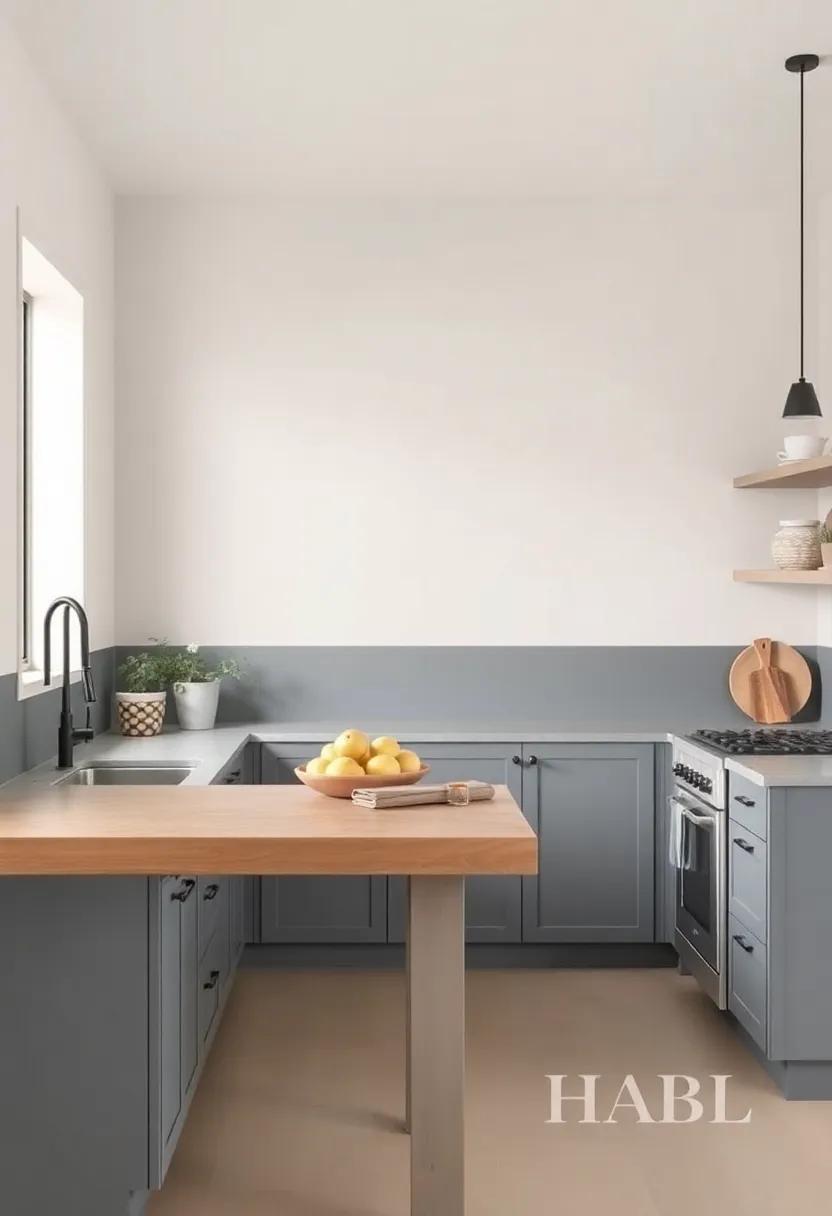
Creating distinct zones in your rustic kitchen can be effortlessly achieved by leveraging color. By selecting a primary color for your cabinetry, you set the stage for the entire room. Deep forest greens or rich, earthy browns can evoke a sense of calm while mirroring the natural elements often found in rustic designs. Once your base color is established, consider using complementary shades to highlight various areas—like soft creams or muted grays for your countertops and backsplashes. These hues not only serve to break up the space visually but also provide a gentle contrast that elevates your kitchen’s overall appeal.
Next, incorporate accent colors in smaller doses to breathe life into specific zones. For instance,a vibrant red or cheerful mustard yellow can pop against the neutral backdrop of your cooking area,adding warmth and inviting energy. Using color in this way allows you to delineate functional areas, such as a baking nook or a dining corner, enhancing their purpose without obstructing the harmonious flow of the space. To see examples of effective color combinations in kitchen design, visit Houzz.
Exploring Seasonal Color changes to Refresh Your Kitchen Look
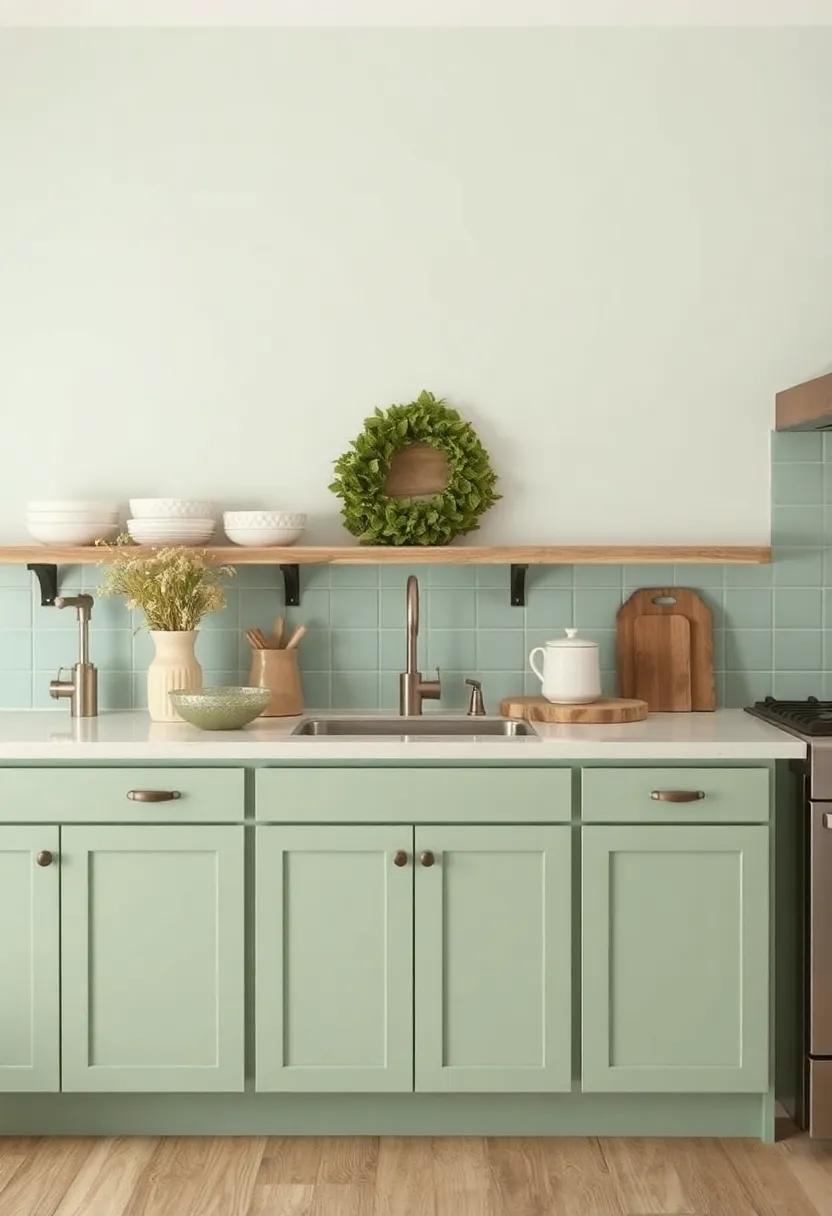
As the seasons shift, so too can the hues that bring life to your kitchen. By embracing the beauty of nature’s color palette, you can transform your cooking space into a sanctuary of warmth and vibrancy. Consider adopting a warm terracotta during the fall, which evokes feelings of coziness and complements the rustic elements frequently enough found in country-inspired designs. In contrast, the bright pastels of spring, such as soft mint or buttery yellow, can introduce a fresh and airy atmosphere that invites creativity and joy into your culinary adventures.
Here are some easy ways to incorporate seasonal colors into your kitchen design:
- Change out dishware and linens according to the season.
- Add seasonal decorations like wreaths or vases filled with fresh flowers.
- Paint or stencil accent walls to reflect seasonal tones.
For a more comprehensive refresh, consider creating a color rotation table to visualize how different shades can represent each season:
| Season | Colors | Suggested Accents |
|---|---|---|
| Spring | pastels | Floral table runners, light ceramic dishes |
| Summer | Brights | Bold fruit bowls, colorful kitchen towels |
| Fall | warm Earth Tones | Wooden accents, seasonal decor |
| Winter | Cool Greens & Blues | Cozy throws, metallic touches |
By thoughtfully selecting your seasonal colors, you not only redefine your kitchen’s aesthetic but also instill a sense of rhythm and connection with the environment. For inspiration on seasonal decor that truly speaks to the rustic charm of your kitchen,explore more at Country Living.
Textures That Enhance Color: Fabrics and Finishes in Rustic Decor
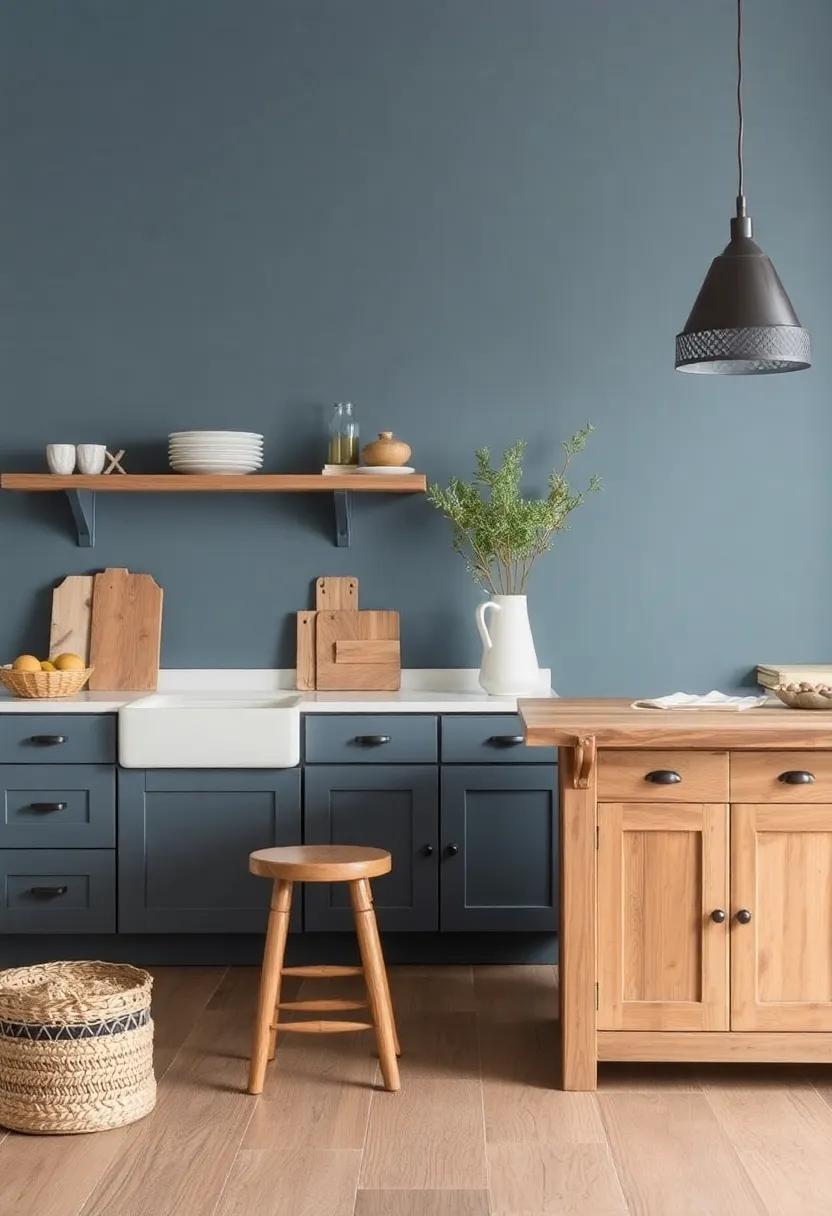
In rustic decor, the interplay between textures and colors can create an enchanting atmosphere that speaks to the heart of cozy living. Fabrics such as linen, cotton, and wool not only provide warmth but also offer a natural feel that enhances earthy color palettes. Rough, untreated materials like burlap can be used for table runners or cushion covers, serving as a backdrop that allows deeper hues to pop. Consider layering different textures to create depth; such as, pair a smooth, wooden table with a knitted throw in earthy greens or rustic oranges. This harmonious contrast not only invites the eye but also encourages a tactile experience that is quintessentially rustic.
Meanwhile, finishes play a pivotal role in bringing these color elements to life. Matte and distressed finishes, frequently enough seen in reclaimed wood furniture, can soften vibrant colors while maintaining their integrity. Accessories like hand-painted ceramics or textured metal can further enrich the decor, marrying function and aesthetics. A color scheme featuring shades such as moss green, deep rust, and muted harvest gold can be beautifully accentuated by satin or semi-gloss finishes on fixtures and fittings. Experimenting with these materials allows homeowners to curate a kitchen that feels inviting and uniquely theirs, embracing the rustic charm that speaks to authenticity and comfort.For more tips on utilizing color in home decor, visit architecturaldigest.com.
Bright Pops of color: Adding character to an Earthy Kitchen
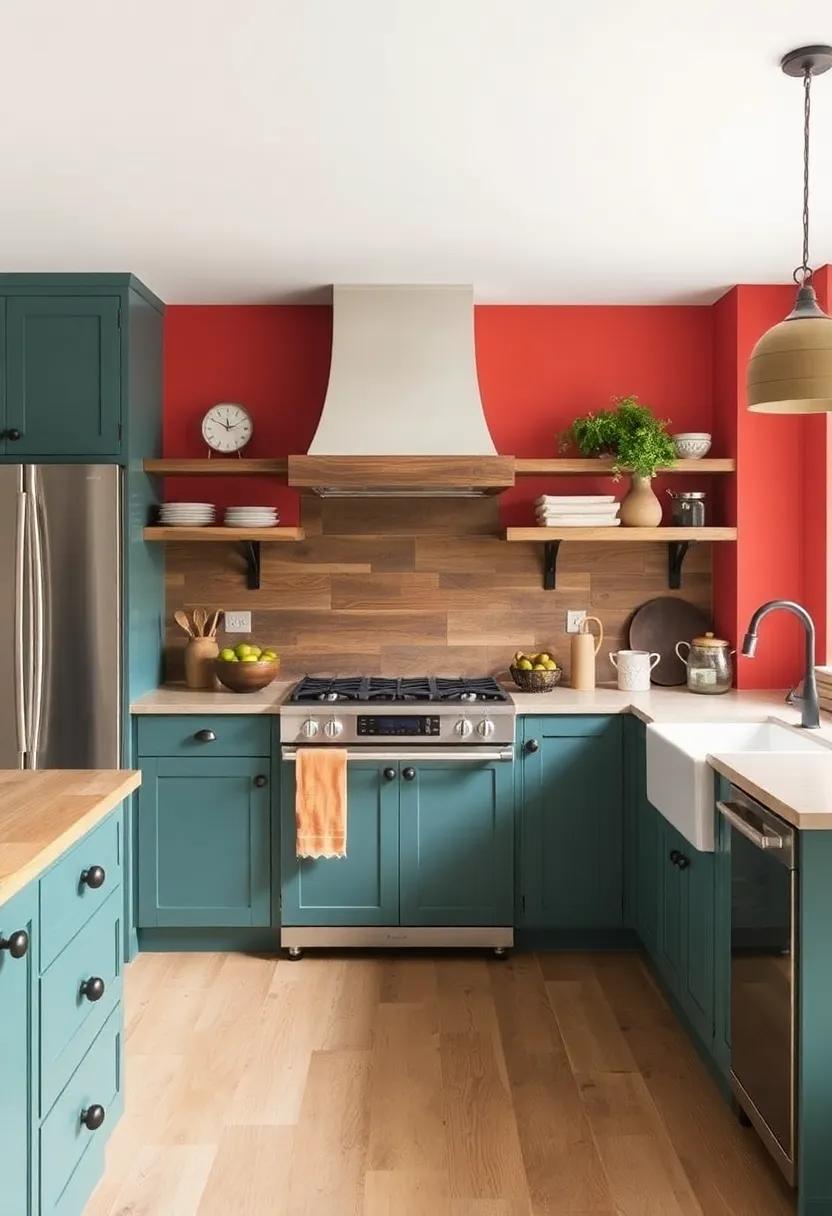
Incorporating vibrant hues into an earthy kitchen can transform the space from a simple culinary area into a lively gathering point. Imagine deep olive greens and rust-colored cabinetry complemented by bold accents such as {{bright red canisters}}, sunny yellow dish towels, or turquoise pots. These elements not only promote a warm and inviting atmosphere but also serve as captivating focal points against the backdrop of neutral tones. Integrating these pops of color through decorative accessories or functional items is a splendid way to express your personal style without overwhelming the heart of your home.
To achieve a cohesive look, consider using a limited color palette to ensure that the earthy tones and bright accents work harmoniously together.Here are some tips to effectively blend these opposing elements:
- Choose a Color Scheme: Stick to two or three accent colors that pair well with the existing earth tones.
- Use Textiles: Bold-colored dishcloths, curtains, or seat cushions can easily be changed and updated.
- Art and Wall Decor: Hang colorful artwork or frames to brighten the room without major renovations.
- Functional Pieces: Invest in vibrant cookware or kitchen appliances that add a cheerful touch.
Utilizing a combination of texture and hue can enhance the rustic charm of your kitchen while keeping it lively and attractive. Consider pairing light wood shelving with brightly colored dishes or eye-catching greenery in vibrant pots. This strategic balance will invite warmth and character that feels both grounded and invigorated,making your kitchen a true reflection of your unique taste.
Using Color Psychology to Create a Relaxing Kitchen Environment
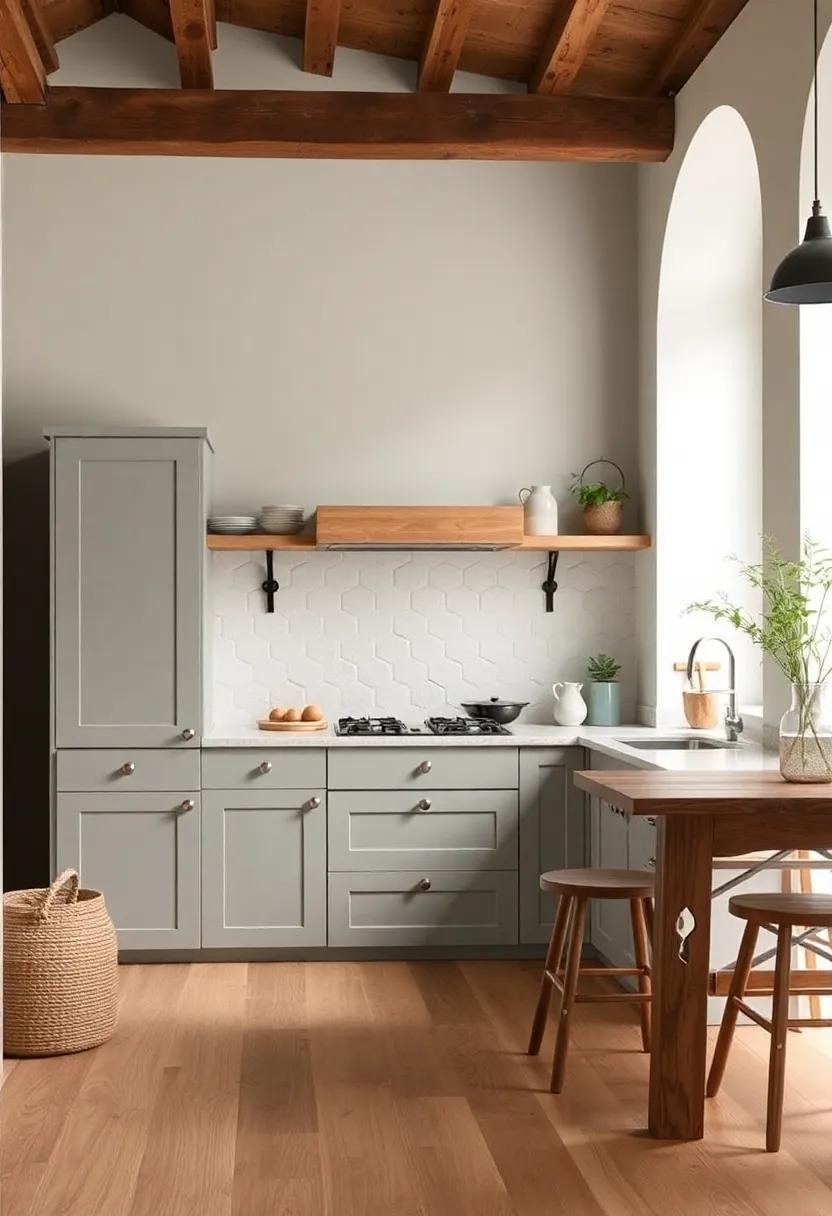
Color plays a pivotal role in shaping the ambiance of your kitchen, particularly when it comes to fostering a tranquil space for culinary creativity.soft shades of blue and green can evoke feelings of calmness and serenity, reminiscent of natural elements.These hues not only enhance the rustic charm of a kitchen through their earthy tones but also encourage relaxation during meal readiness. Pairing these colors with natural materials such as reclaimed wood cabinetry or stone countertops can create a cohesive look that draws inspiration from the outdoors, making your kitchen a soothing retreat.
Implementing accents in muted taupes or creams further enhances the sense of peace within the kitchen environment. These colors can serve as a backdrop for more vibrant decor elements, allowing the space to feel inviting yet calm. Consider the following suggestions for your kitchen:
- Soft Blue Walls: Create a backdrop that promotes relaxation.
- Earthy Green Accents: Add a touch of nature with accessories or plants.
- Warm Neutral Countertops: anchor your design with comforting tones.
For a detailed exploration of the impact of color psychology,check out Psychology today.
Designing with Wood: Color Combinations That Celebrate Timber
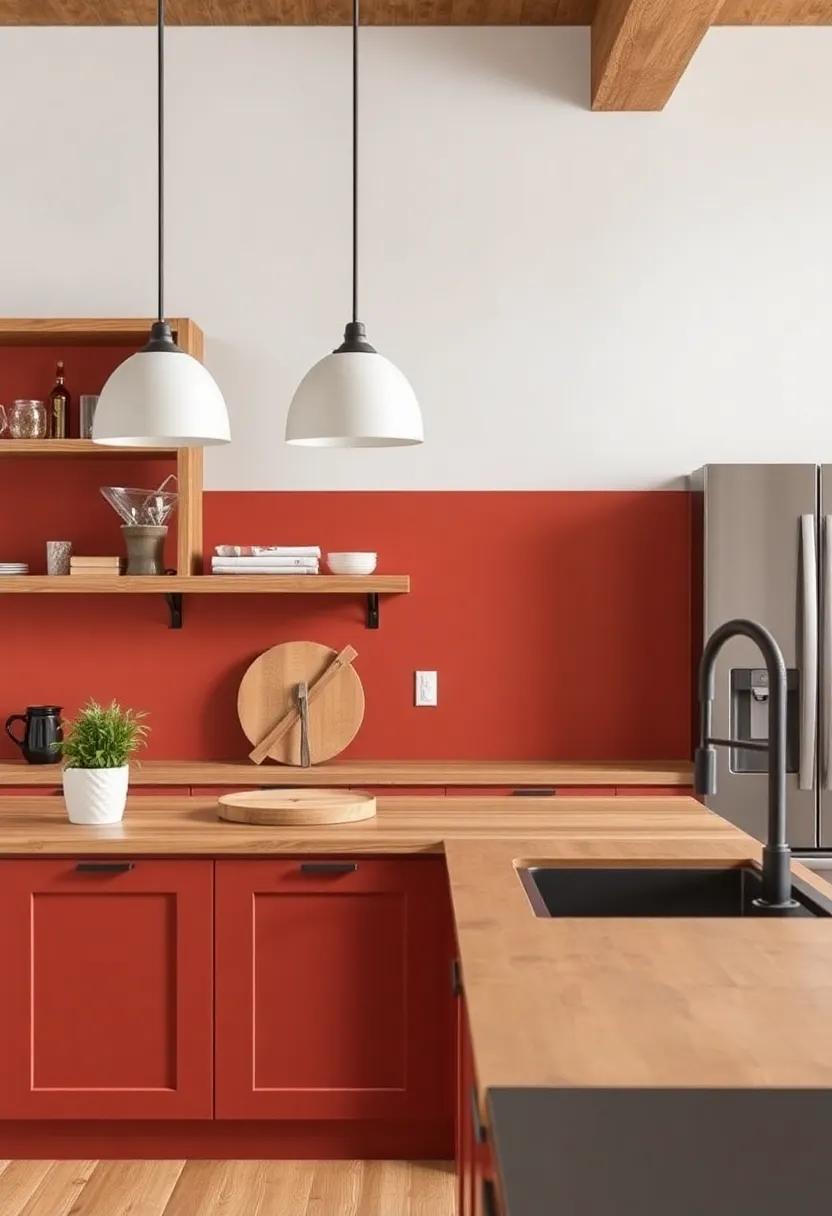
When it comes to designing spaces that honor the natural beauty of wood, color combinations play a pivotal role. Start by selecting hues that not only complement the grain and texture of the timber but also enhance the warmth that wood offers. For a timeless appeal, consider pairing lighter woods like pine or birch with shades of soft cream, muted sage, or powder blue. These colors create an airy, inviting atmosphere that allows the wood’s natural character to shine through. To add a touch of drama, deep blues or forest greens can be introduced as accent colors, providing a stunning contrast that highlights the organic elements of your kitchen.
In addition,think about the striking interplay between rustic wood and more vibrant tones.Rich hues such as rusty orange, deep burgundy, or golden yellow can infuse your space with energy while maintaining that cozy, earthy vibe. These colors echo the richness found in hardwoods like walnut or mahogany, creating a harmonious backdrop that brings the rich textures of timber to life. For a modern twist, you might consider the stylish blend of charcoal gray with natural wood tones, offering a sleek yet warm look. To discover more about pairing colors with wood, visit Architectural Digest.
Capturing the Essence of Farmhouse Chic in Your Kitchen Palette
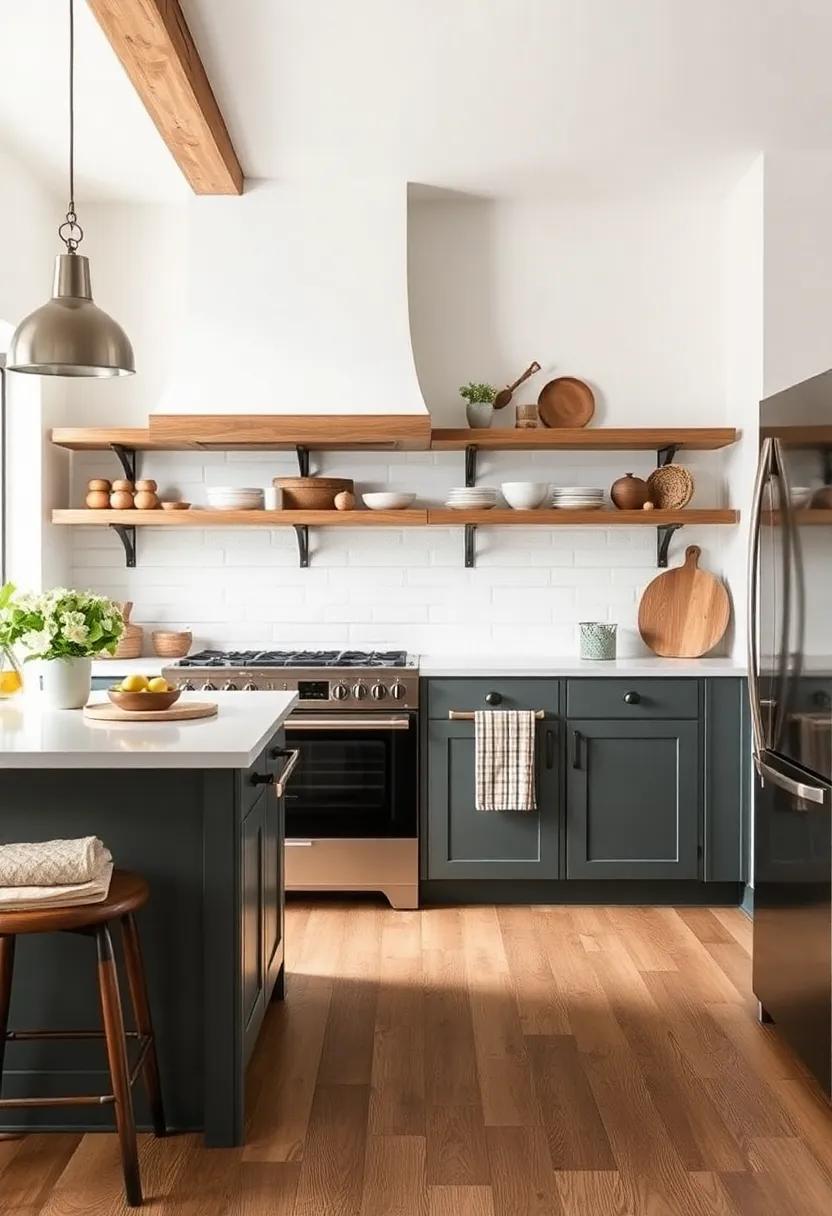
To truly embody the farmhouse chic aesthetic, focus on a color palette that radiates warmth and simplicity. Consider incorporating soft whites and creamy beiges, which serve as a versatile backdrop, allowing the kitchen to feel light and spacious. Accents of muted greens and gentle blues can introduce a touch of nature, reminiscent of rustic landscapes. A few well-placed splashes of barn red or deep navy can add character and depth, making the space feel inviting yet sophisticated. Combine these hues thoughtfully to reflect an organic and lived-in feel, balancing light and dark tones to prevent overwhelming the senses.
When selecting your colors, aim for a combination that harmonizes both cabinetry and decor. Here are some fantastic color pairings to consider:
- Soft Cream + sage Green
- Charcoal Gray + Mustard Yellow
- Dusty Blue + Antique White
- Light Taupe + Rust Orange
Additionally, using natural materials can enhance the overall aesthetic. A rustic wooden table or open shelving can break the monotony of color,while handmade pottery adds an artisanal touch. For further inspiration and resources on achieving a cohesive farmhouse look, visit Apartment Therapy, where you’ll find a wealth of ideas and expert tips.
Rustic Color Inspirations from Traditional Country Homes
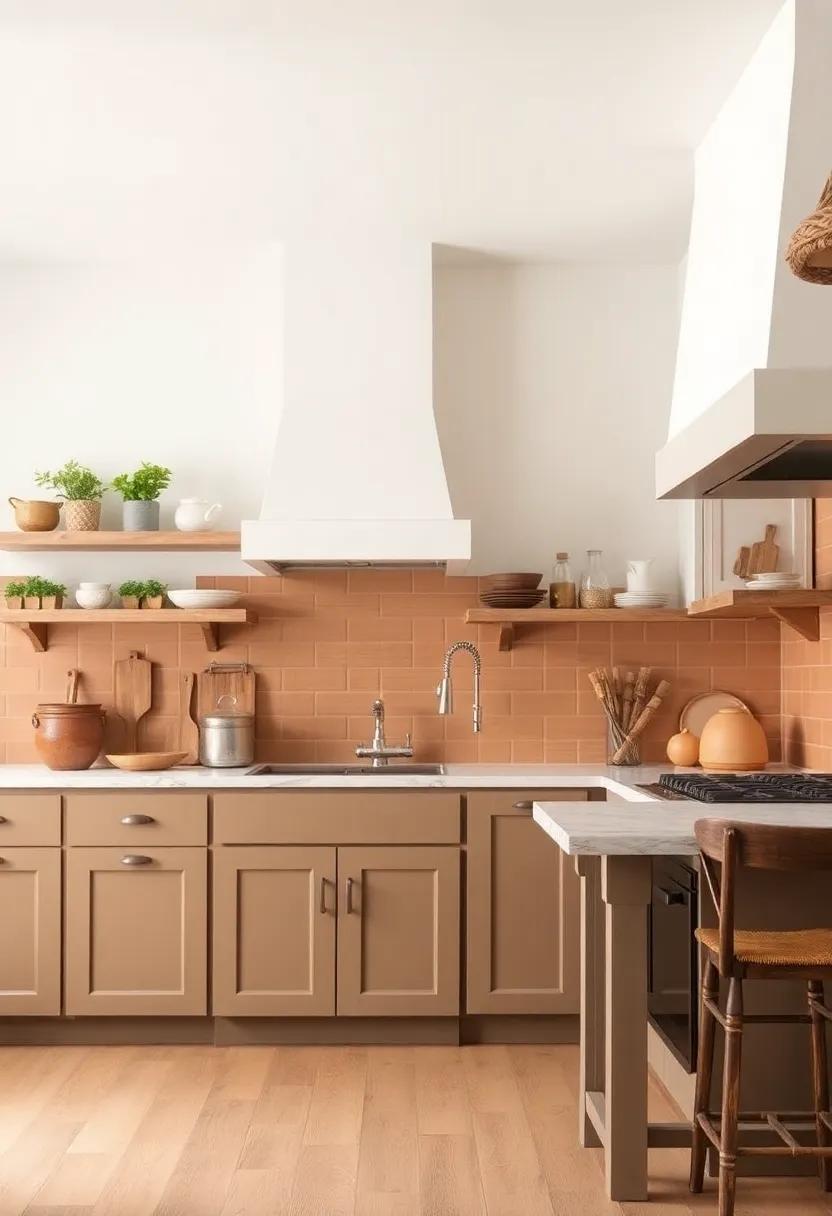
When drawing inspiration from traditional country homes, one cannot overlook the rich and earthy tones that create an inviting atmosphere. Think of warm taupes, soft greens, and burnished reds that evoke a sense of comfort and nostalgia. These colors mirror the natural landscape surrounding many rural homes, bringing the outdoors inside. Accents of deep navy or charcoal can add a modern twist,enhancing the rustic palette while maintaining harmony. Pairing these shades with natural wood finishes and vintage-style fixtures creates an enchanting backdrop that is perfect for both cooking and gathering with loved ones.
To create a cohesive look, consider the following color combinations inspired by traditional aesthetics:
- Taupe and Sage Green: A versatile duo that brings tranquility and warmth.
- Burnished Red and Cream: Perfect for a classic farmhouse feel, balancing vibrancy with softness.
- Deep Navy and Mustard Yellow: A bolder choice that adds personality while maintaining a rustic undertone.
Incorporating textures found in nature, such as rough-hewn stones and reclaimed wood, can further enhance the visual appeal of these palettes. For more ideas on color combinations and rustic design, visit Decoist.
The Role of Lighting in Bringing Out Your Kitchen’s Color Beauty
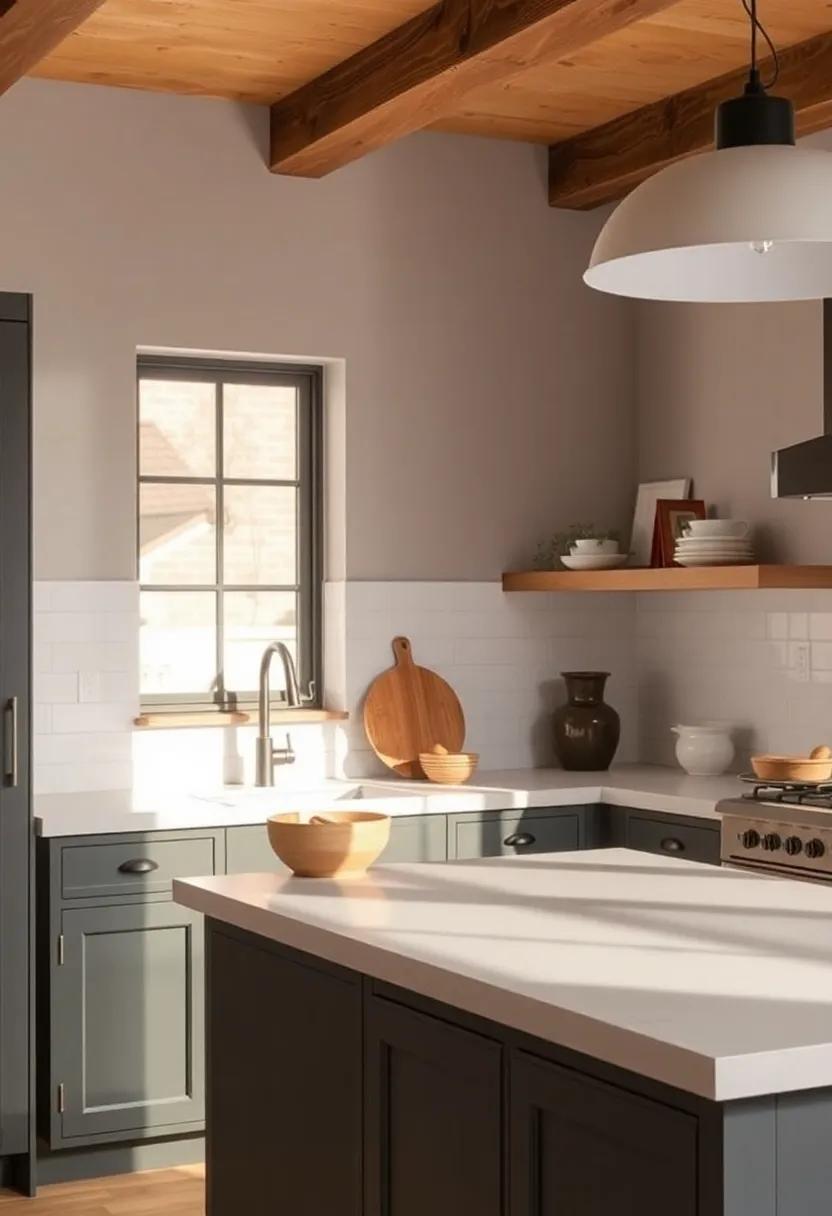
Lighting is not merely a functional necessity in the kitchen; it serves as a transformative tool that can enhance the beauty of your chosen color palette. By utilizing a variety of light sources strategically,you can create an inviting and cohesive ambiance that highlights the rich tones of rustic hues. Consider incorporating warm-toned lights that can cast a golden glow over wooden cabinets or terracotta tiles, creating a harmonious blend of colors that evoke a sense of comfort and nostalgia. Additionally, layering different types of lighting—including ambient, task, and accent lighting—can draw attention to specific areas, making vibrant accents pop while allowing deeper shades to create warmth.
To effectively bring out the color beauty in your kitchen, think about the following aspects of your lighting design:
- Color Temperature: Choose bulbs with a warm color temperature (around 2700K to 3000K) to amplify the richness of earthy tones.
- Placement: Position pendant lights over islands or dining areas to create focal points that enhance the overall color scheme.
- Dimmer Switches: Install dimmers to easily adjust the intensity of light, allowing for versatility during different times of the day.
Furthermore, consider how natural light plays a role in your kitchen. Large windows or skylights can not only brighten the space but also reveal the true colors of vibrant accents and countertops. Utilizing sheer or light-filtering drapery can soften harsh sunlight, creating a gentle interplay between light and shadow that enriches the visual palette. Research shows that the way light interacts with colors can significantly impact emotional response and perception; thus, you might explore more about this topic at lightingdesignandsupply.com for further inspiration.
Creating a Visual Focal Point with bold Rustic Colors
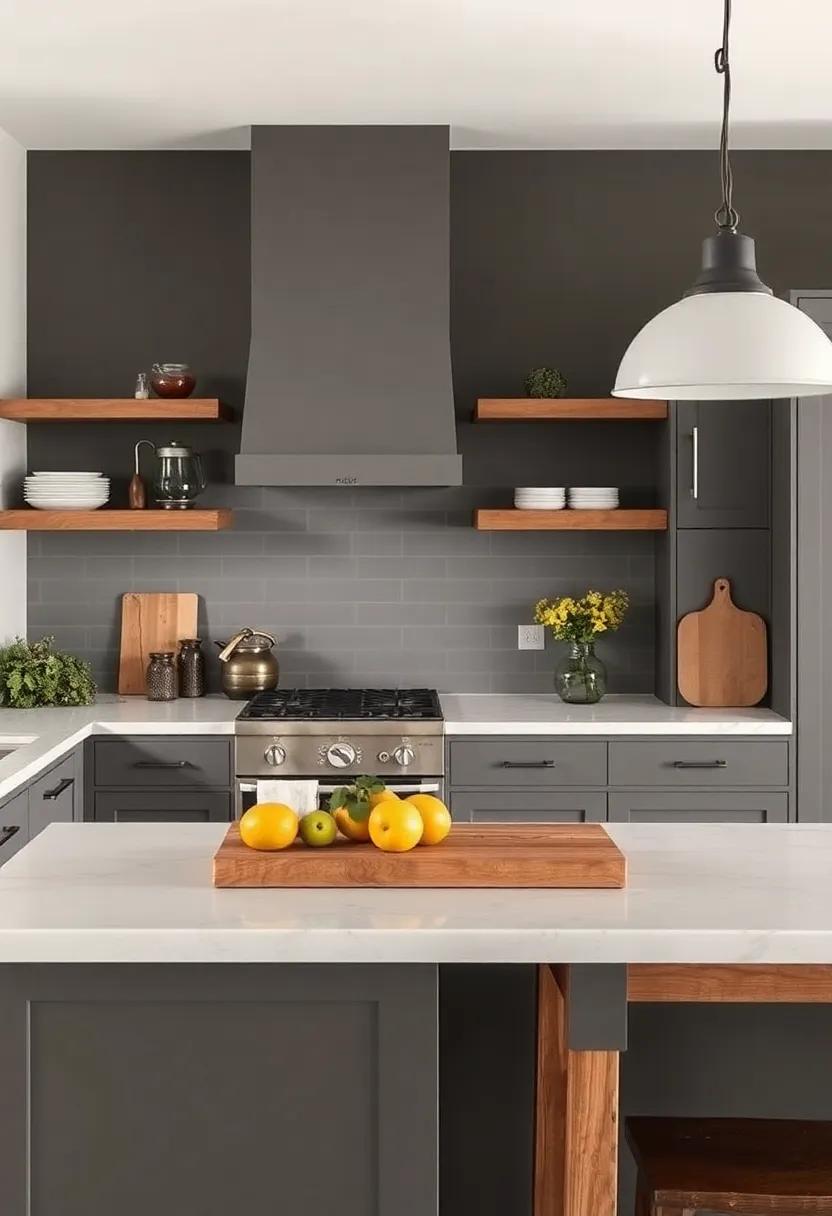
When it comes to creating an inviting atmosphere in a rustic kitchen, bold colors can effortlessly draw attention and highlight the room’s unique charm. Think of deep,earthy tones that evoke nature’s beauty,such as emerald greens,rusty oranges,and warm browns. These colors can serve as the backdrop for your space, creating a vibrant foundation while still feeling grounded. Utilizing colors with richness allows natural materials like wood and stone to shine, establishing a harmonious balance that celebrates rustic aesthetics. Consider painting an accent wall with terracotta or adding colorful ceramic tiles into your backsplashes to create a striking contrast.
Incorporating bold hues doesn’t have to be overwhelming; instead, aim for a curated palette that enhances your kitchen’s character. You might choose a few key elements to splash color across, such as:
- Counters – Utilize colorful kitchenware or cookware that adds personality.
- Textiles – Opt for vibrant dish towels or printed curtains to soften the space.
- Furniture – Consider painted wooden stools or chairs to infuse brightness.
Additionally, remember that lighting plays a crucial role in how these colors are perceived.Natural light can accentuate depth in your color choices, making them stand out even more during the day.If you want further inspiration for selecting the perfect palette, check out Color.com for creative ideas that align with the rustic themes you love.
Timeless Color Combinations That Never Fade in Rustic Design
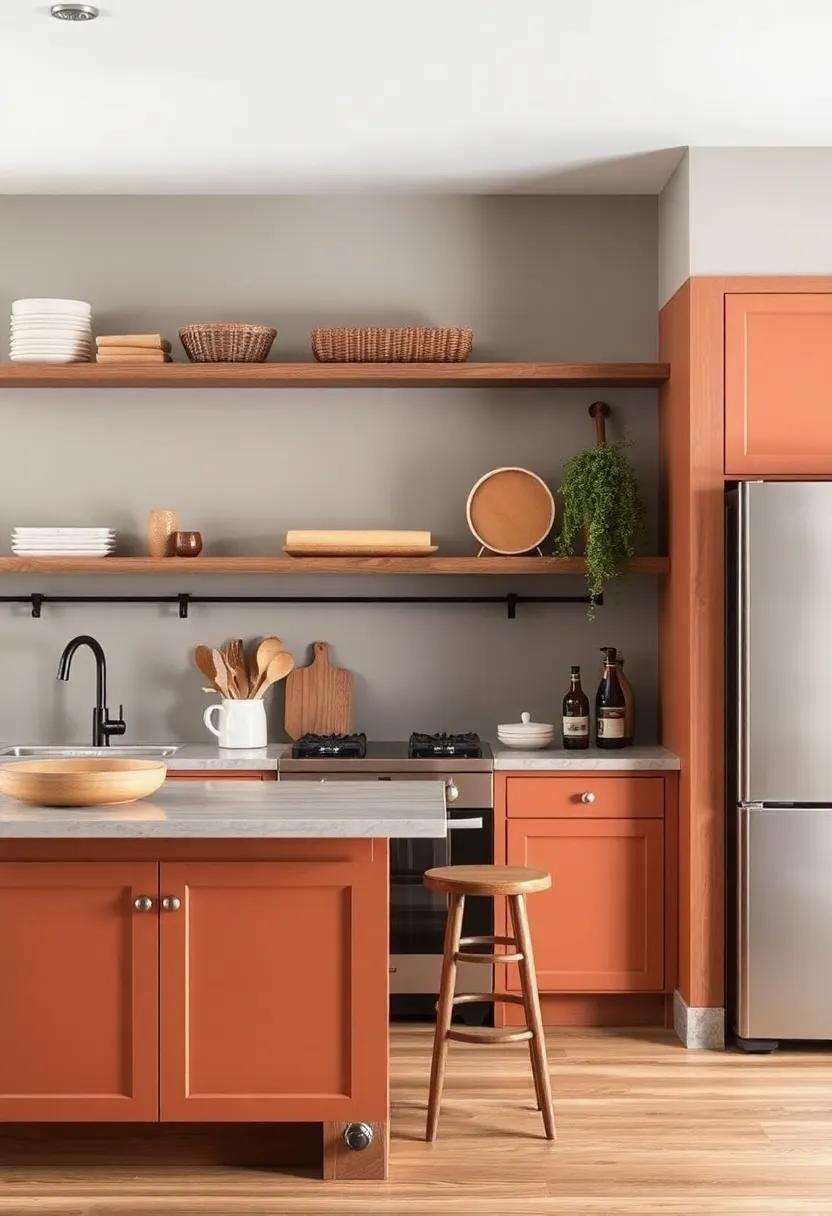
Rustic design thrives on the natural beauty of earthy tones and textures that create a calming ambiance. Some of the most enduring color combinations include warm browns paired with soft creams, which evoke a sense of comfort and harmony. Incorporating deep greens alongside these neutrals enhances the organic feel,reminding us of the lush outdoor environments. Rich shades of terracotta add an unexpected flair, allowing for a striking visual contrast while remaining in line with nature’s palette.These colors can be beautifully complemented by accents in pewter or brass, which add a subtle sophistication to the rustic aesthetic with their metallic hues.
Another classic combination involves shades of slate gray and burnt orange, creating a warm yet grounded atmosphere perfect for a kitchen setting. Paired with creamy whites, this mix captures the essence of rustic elegance while allowing creative freedom in decor. To further enhance your design, consider incorporating textiles such as linen or burlap in these shades, as they bring a tactile element that softens the overall look. Don’t forget to include natural wood finishes to tie the entire palette together seamlessly. For even more inspiration on color combinations, visit houzz.com, where you can explore countless design ideas tailored to the rustic charm.
Embracing Whimsical Elements: playful Colors for Rustic Kitchens
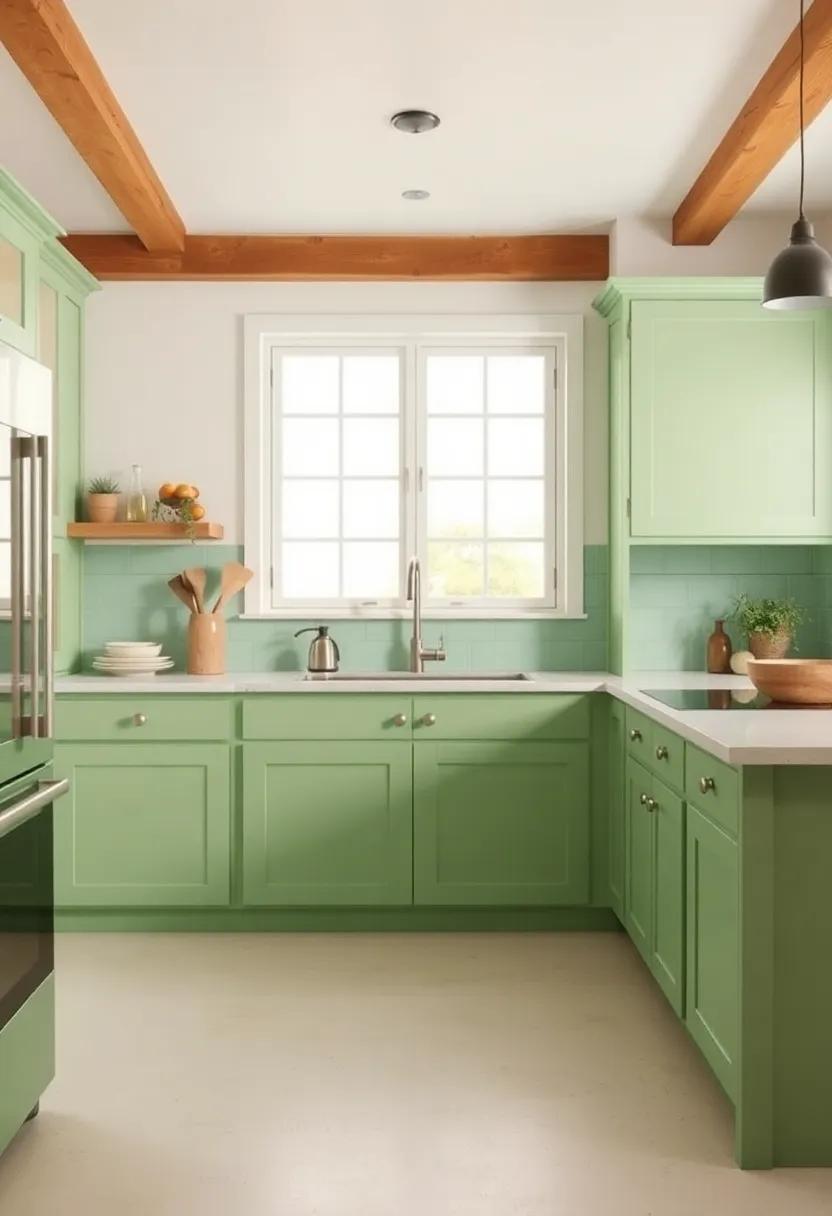
Incorporating playful colors into rustic kitchens can transform them into vibrant spaces that spark joy and creativity. Picture a backdrop of deep, rustic greens paired with pops of sunny yellows and cheerful corals. These lively shades breathe life into the warm wooden elements and aged textures frequently enough found in rustic designs. Thoughtfully chosen accent pieces—like a bright yellow farmhouse sink or coral-hued dishware—can create a visual feast, making your kitchen a gathering place filled with warmth and delight.When selecting your color palette, consider combining soft pastels with bold accents for a balanced yet enchanting atmosphere.
Adding unexpected whimsical elements, such as patterned tiles or quirky light fixtures, can enhance the playful theme further. Here are some vibrant choices to consider:
- Mint Green: A refreshing shade that pairs beautifully with rustic wood.
- Peach: A soft, pastel tone that adds warmth without overpowering.
- Turquoise: Strikes a perfect balance between bold and soothing.
- Mustard Yellow: A rich hue that adds a nostalgic feel while stimulating creativity.
To see how these colors can fit into your space, you might enjoy exploring some inspirational ideas online.Websites like Houzz feature extensive galleries of rustic kitchens brimming with character and color combinations that celebrate whimsy.
Selecting Accessories that Enhance Your Kitchen’s Color Scheme
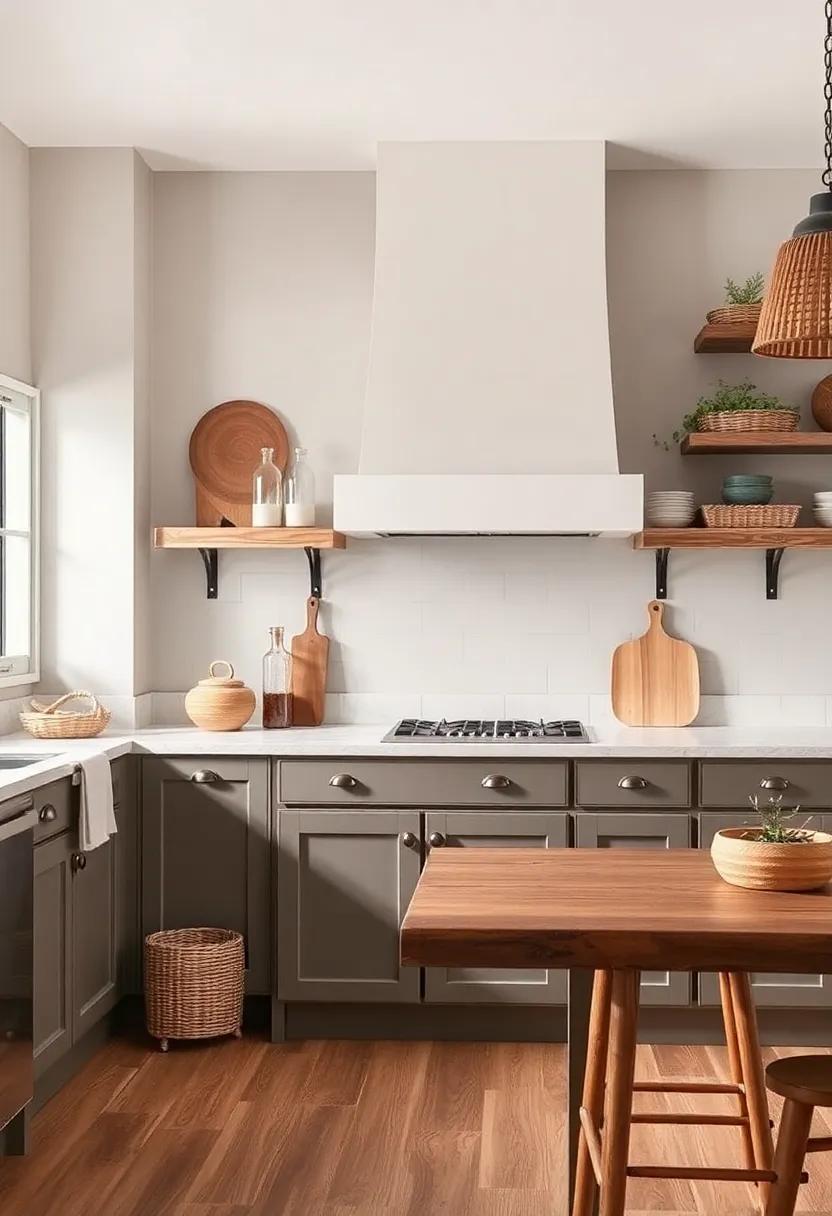
When it comes to crafting a kitchen space that reflects rustic charm, the accessories you select play a pivotal role in enhancing your chosen color palette. Start by considering natural materials that seamlessly blend with your design theme. Items such as wooden cutting boards,ceramic pitchers,or woven baskets can add warmth and texture,harmonizing beautifully with earthy tones. Look for accessories that incorporate soft finishes and organic shapes to create an inviting atmosphere. Additionally, incorporating metallic accents like brass or wrought iron can add a touch of vintage elegance, providing a striking contrast to your kitchen’s foundational colors.
to ensure your accessories tie the room together, consider these key elements when selecting pieces:
- Complementary Colors: Choose accessories that fall within the same color family or offer a subtle contrast.
- Texture Variety: Balance smooth surfaces with rough,tactile elements to create visual interest.
- Size and Scale: Select accessories that suit your kitchen’s proportions; oversized or small items can dominate or fade into the background.
| Accessory Type | Color Suggestions |
|---|---|
| Cutting Boards | Natural wood tones or muted greens |
| Storage Baskets | Earthy browns and soft grays |
| Hanging Utensils | Brushed brass or antiqued silver |
For more inspiration on rustic accessories and how they can transform your kitchen,visit Houzz for a wealth of ideas and products.
Sustainable Choices: Eco-Friendly colors for a Rustic Kitchen Look
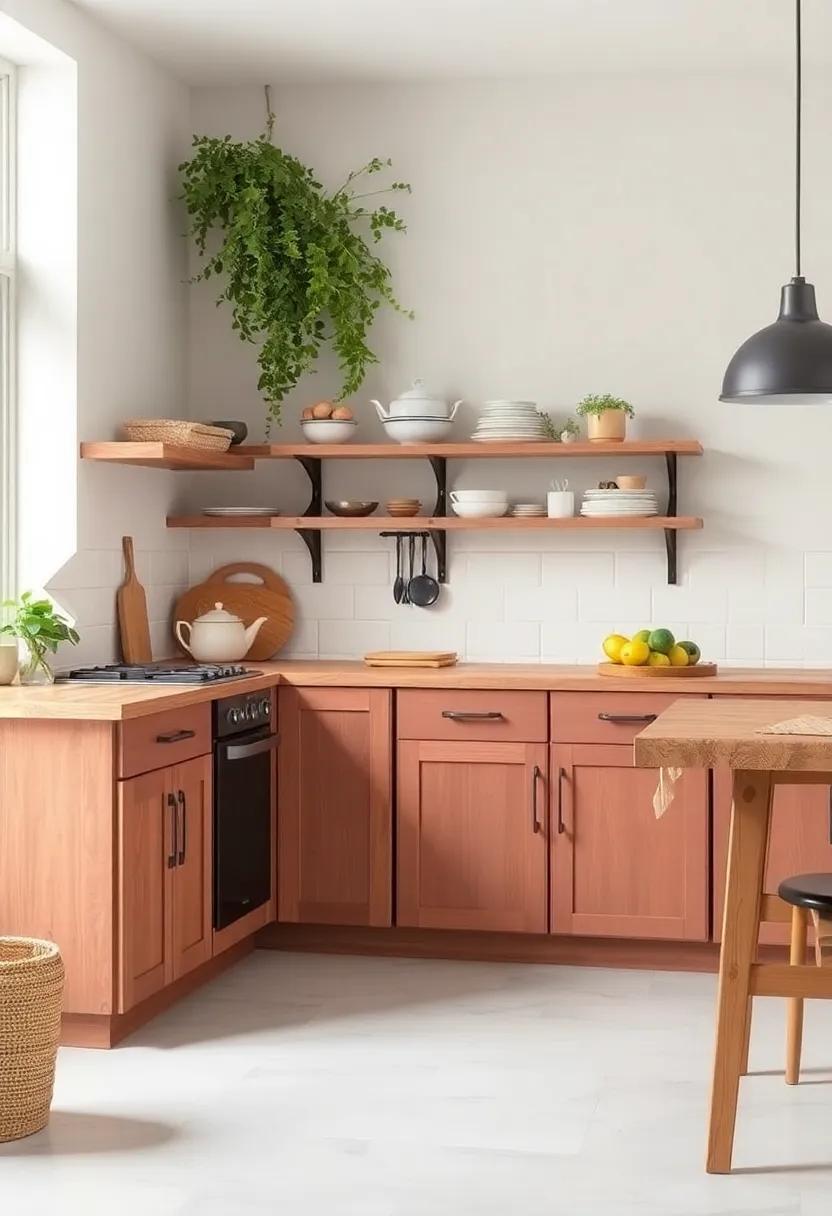
When crafting a rustic kitchen, the color palette should reflect the natural beauty and warmth found in nature. eco-friendly colors can transform your space into a serene and inviting cooking area, all while reducing your environmental footprint. Consider using natural earth tones such as terracotta, ochre, and forest green. These hues not only evoke the rugged charm of rural living but also contribute to a breathable atmosphere. Accentuate your chosen colors with textures that mimic the outdoors—like wood, stone, and textiles made from organic fibers—and you’ll create a kitchen that feels both timeless and contemporary.
To further enhance your eco-friendly rustic aesthetic, you can integrate eco-conscious paint options into your design. Look for paints that are low in volatile organic compounds (VOCs) to maintain healthy indoor air quality.Shades like rusty reds and muted yellows can beautifully complement reclaimed wood cabinetry, while soft blues and greys provide a perfect backdrop for vintage accents. Here’s a speedy comparison of eco-friendly color choices:
| Color | Type | Harmony |
|---|---|---|
| Terracotta | Earth Tone | Warm & Inviting |
| soft Sage | Greenery | calm & Rejuvenating |
| Rusty Red | Accent | Bold & Cozy |
| Muted Mustard | Warm Neutral | Cheery & bright |
For more inspiration and resources on eco-friendly color choices, check out Green Building Advisor.
Color trends That elevate Rustic Kitchen Designs in Modern Homes
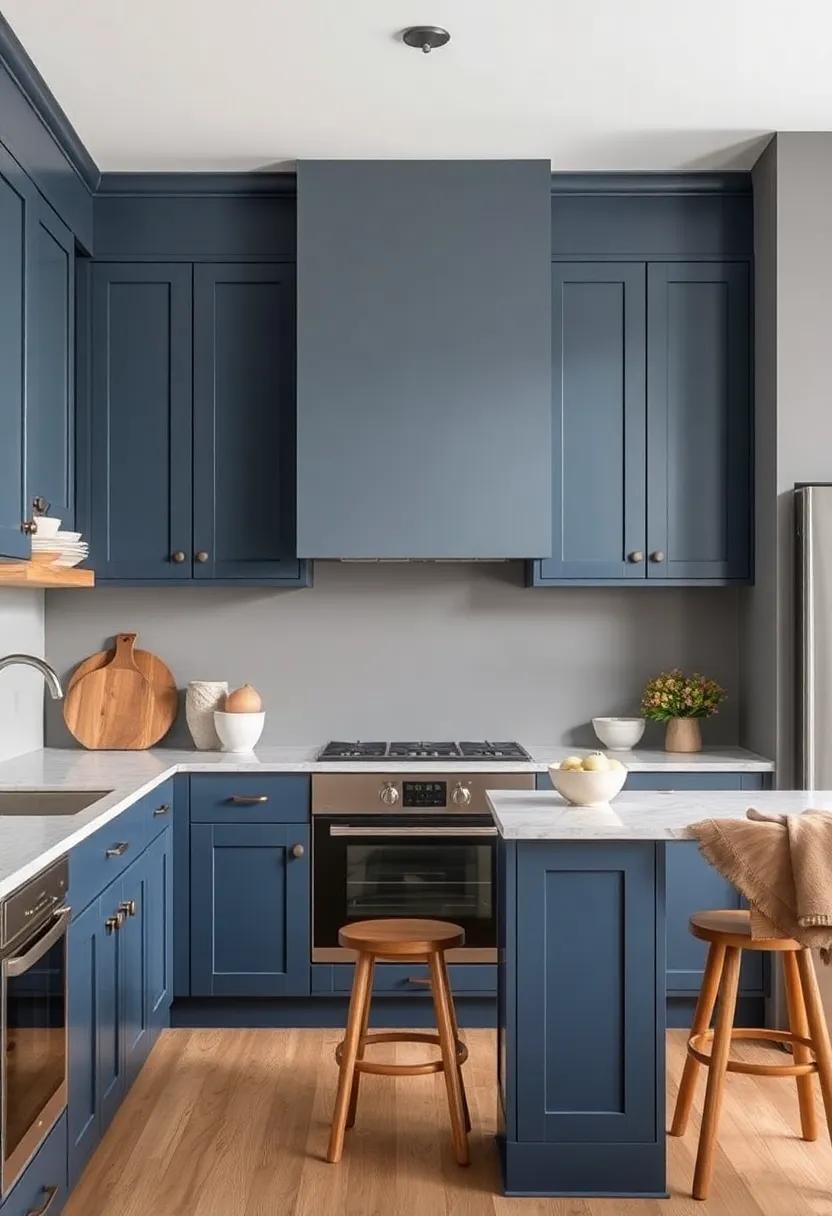
To create a truly inviting rustic kitchen, employing a thoughtfully curated color palette is essential. Consider earthy tones like warm terracotta,soft sage green,and rich ochre,which connect effortlessly to nature. These hues can be used on walls, cabinetry, and even in your choice of décor to evoke a sense of warmth and authenticity. The charm of distressed woods or exposed beams can complement these colors beautifully,adding depth and textural interest to the space.
Accent colors play a pivotal role in enhancing rustic aesthetics while contributing a fresh, modern feel. Incorporating shades such as dusty blue or mustard yellow can create striking focal points. Use these colors in backsplashes, kitchen islands, or decorative accessories to elevate the overall design. Below is a simple color guide to help you visualize the perfect complements for your rustic kitchen:
| Color | Best Uses |
|---|---|
| Warm Terracotta | cabinetry, Accent Walls |
| Soft Sage Green | Walls, Backsplash |
| Dusty Blue | Hood, Accessories |
| Rich Ochre | Countertops, Accents |
| Mustard Yellow | Decorative Items, Rugs |
By balancing these captivating colors, you can transform your kitchen into a serene yet stylish retreat that celebrates rustic charm while embracing contemporary elegance.For more inspiration on color palettes in rustic designs, visit House Beautiful.
Harnessing the Power of Color for a Welcoming Kitchen Atmosphere
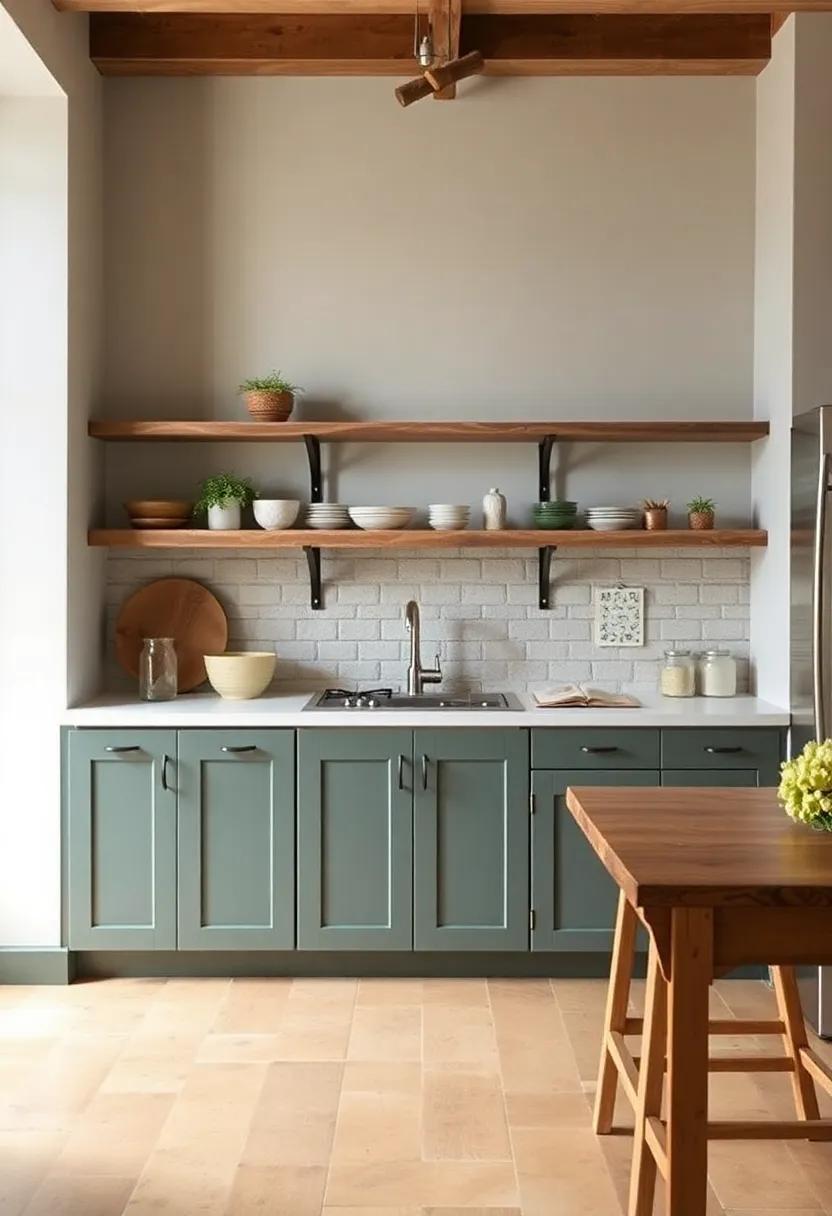
When it comes to creating an inviting kitchen, color plays a pivotal role in establishing a warm and approachable atmosphere. Shades like soft creams, gentle greens, and earthy browns can transform the space, evoking feelings of comfort and connection. To further enhance this rustic charm, consider incorporating textured materials that harmonize with your chosen palette. By blending natural wood finishes with a muted color scheme, you create a timeless foundation that invites gathering and conversation. This approach not only makes the kitchen visually appealing but also encourages a sense of community among family and friends.
To maximize the effectiveness of your color choices, focus on a combination of hues that complement each other beautifully. Here are a few suggestions:
- Soft Sage Green: Paired with cream or beige for a fresh, airy feel.
- Warm Terracotta: Matched with deep navy or charcoal to add depth.
- Rustic Red: Complemented by neutral beiges or warm grays for balance.
For an extra touch, consider adding accent pieces in contrasting colors to draw the eye and create focal points. Elements such as bright ceramic dishes, textured dishcloths, or even bold kitchen gadgets can bring a playful energy to your rustic kitchen. Explore more about color theory and its impact on interior design at Color Matters.
concluding Remarks
embracing rustic charm in your kitchen is a delightful journey that harmonizes warmth, character, and timeless elegance. The right color palette can transform the heart of your home into a sanctuary that invites both culinary creativity and cozy gatherings. Whether you opt for soft earth tones, vibrant jewel shades, or understated neutrals, each choice tells a story of comfort and connection to nature.As you embark on this transformative endeavor, remember that the true essence of rustic charm lies not just in color, but in the memories crafted within those beautifully adorned walls. So gather your inspiration, unleash your creativity, and let your kitchen reflect the unique tapestry of your life. Happy decorating!
As an Amazon Associate I earn from qualifying purchases.
 theFASHIONtamer Where Style Meets Space, Effortlessly
theFASHIONtamer Where Style Meets Space, Effortlessly
